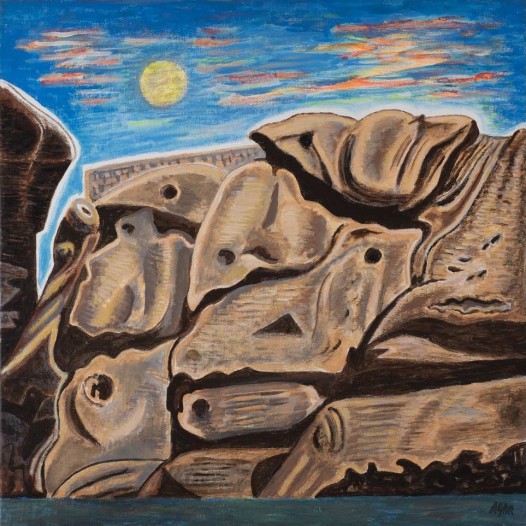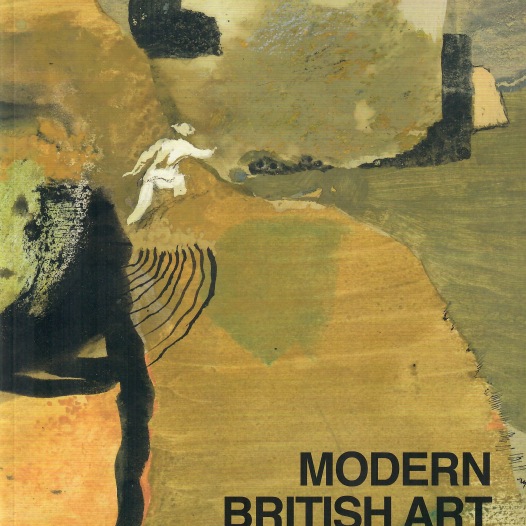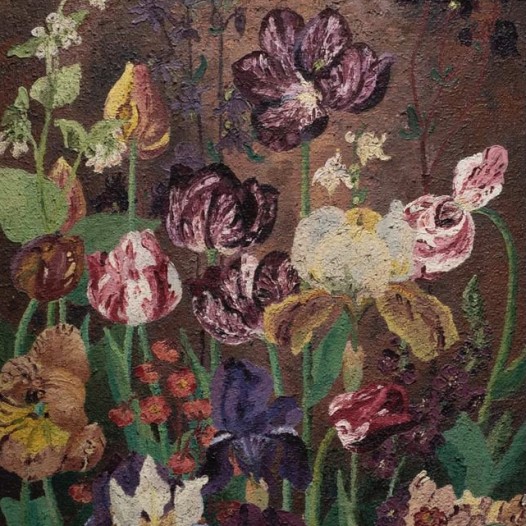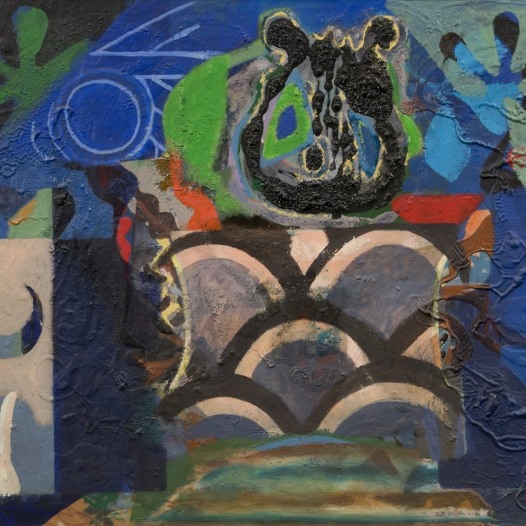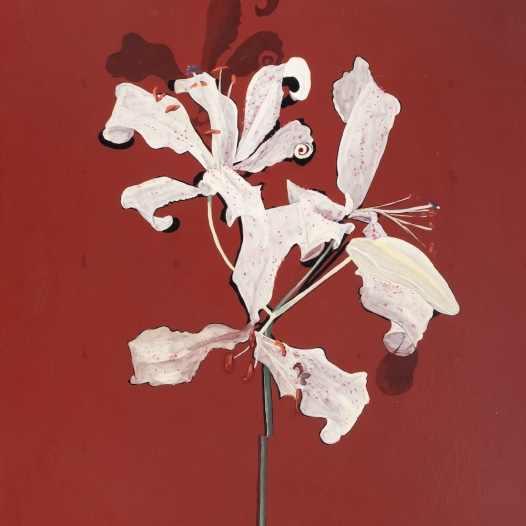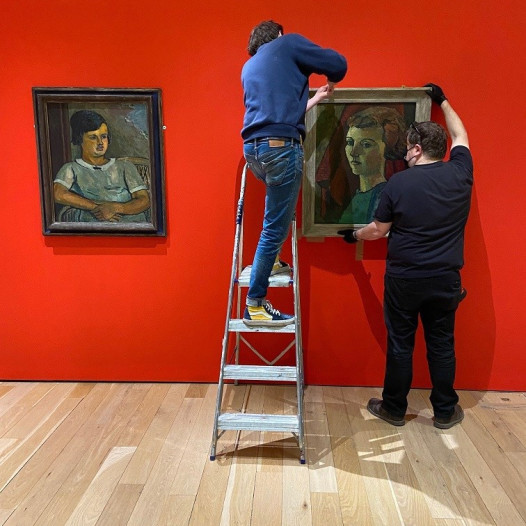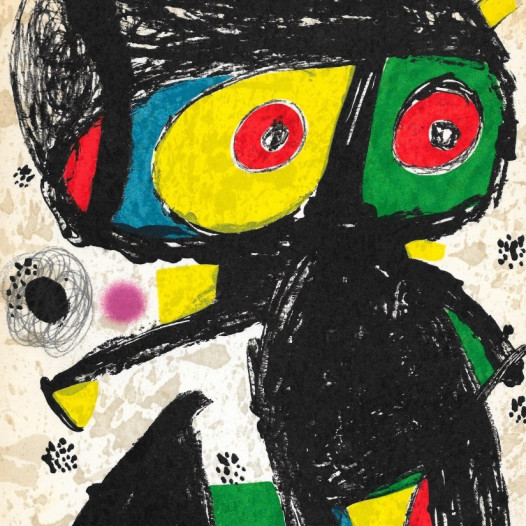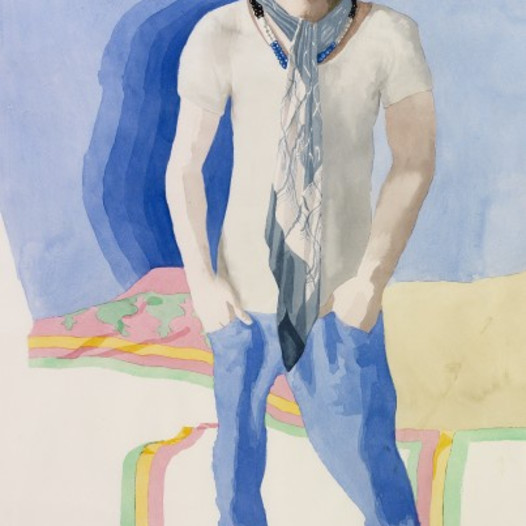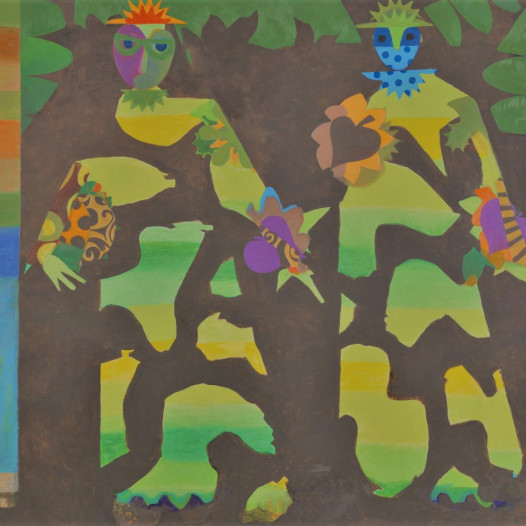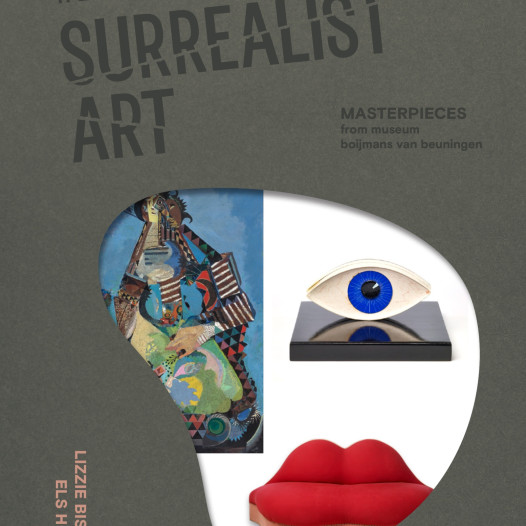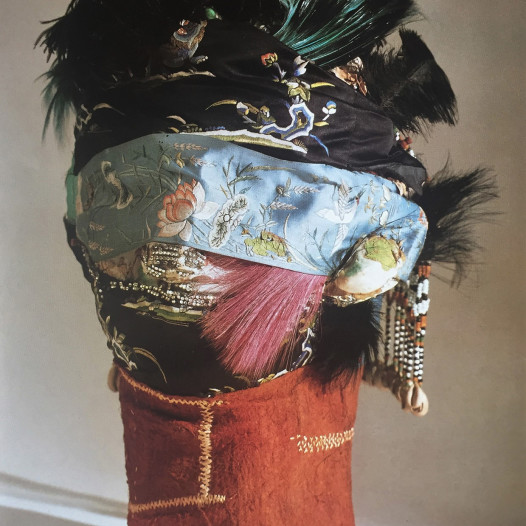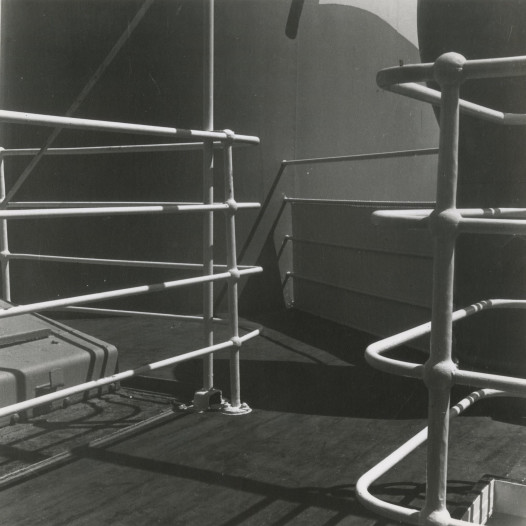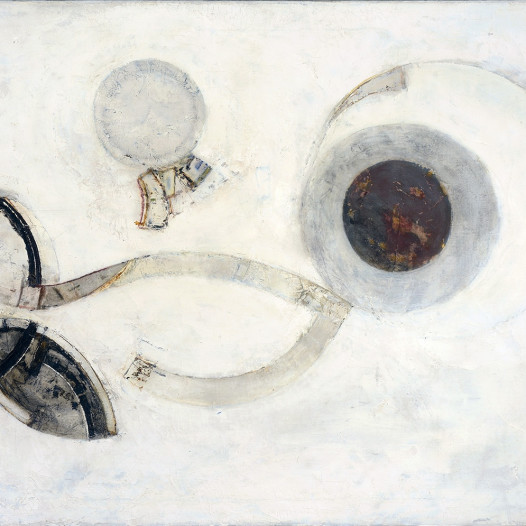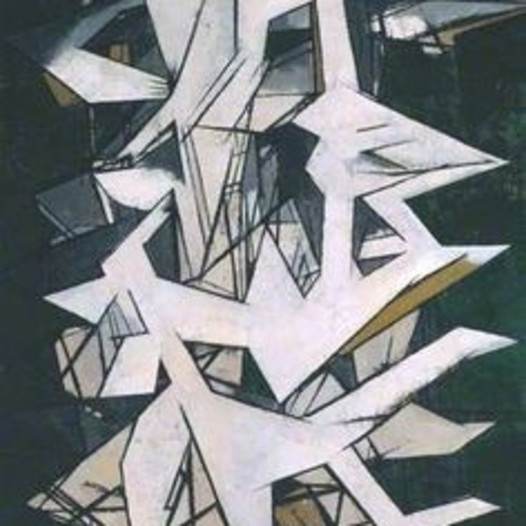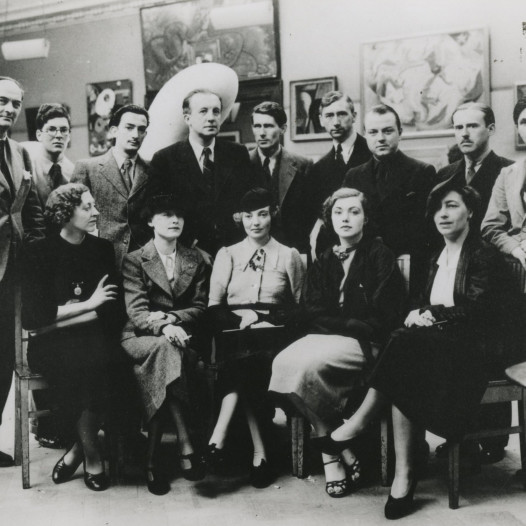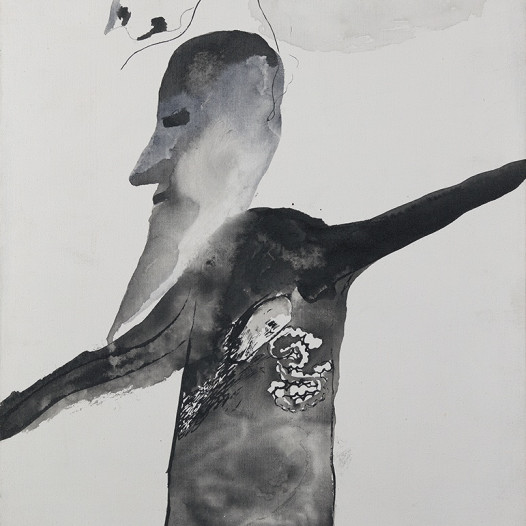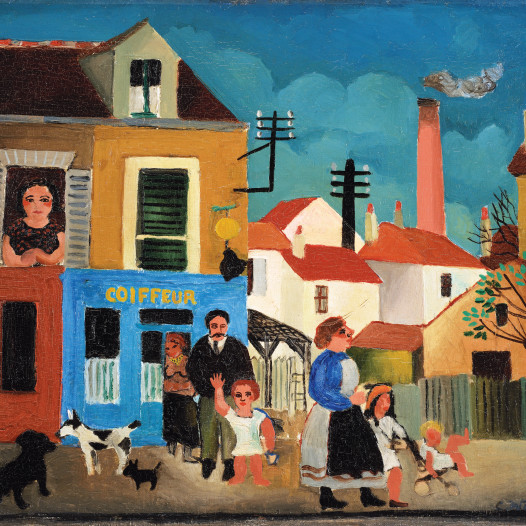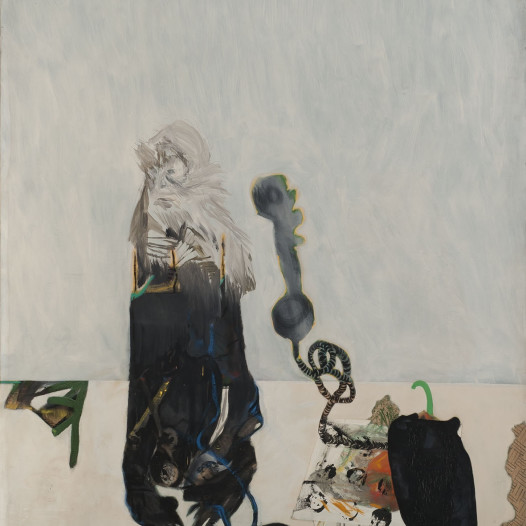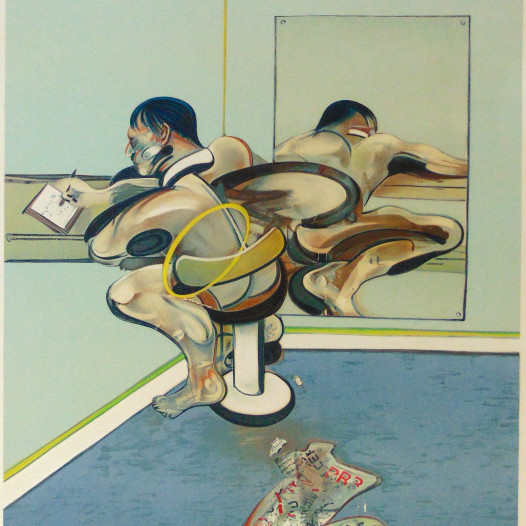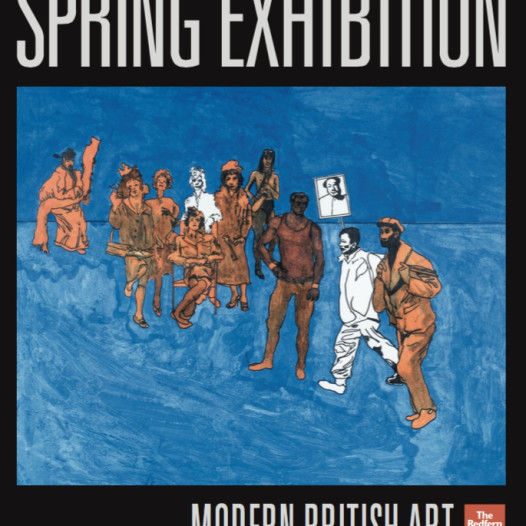Eileen Agar RA
1899–1991One of the few women artists to take part in the seminal International Surrealist Exhibition, at London's New Burlington Galleries in 1936, Eileen Agar enjoyed a prolific and illustrious career that spanned seven decades, in which her creative output encompassed drawing, painting, collage, photography and sculpture. During her colourful life and career, Agar studied alongside Henry Moore, befriended Andre Breton, holidayed with Picasso, dated Paul Nash, and married Joseph Bard. Her creativity continued undiminished, and either side of her ninetieth birthday, Agar published an autobiography, and won election to the Royal Academy.
Born in Buenos Aires, Agar moved to England aged seven, and went on to study art the Brook Green School and then at the Slade. In 1928 she moved to Paris with the Hungarian writer Joseph Bard (whom she later married), and befriended Andre Breton, Ezra Pound and Paul Eluard. Agar soon developed a love of beachcombing, and the accumulation of discarded shells, bones and plankton inspired a series of playful and innovative sculptures and assemblages, produced throughout the 1930s. One of her most notable assemblages from this time was Ceremonial Hat for Eating Bouillabaisse, a painted basket topped with pieces of a bone, coral, a lobster and a starfish. Captured on film, Agar famously walked along the streets of London wearing this bizarre creation.
Henry Moore, a fellow Brook Green alumni and lifelong friend, encouraged her to join The London Group, with whom she exhibited various works. At the suggestion of Herbert Read and Roland Penrose, Agar participated in the International Surrealist Exhibition, a landmark show that launched Surrealism in Britain. This was followed by inclusion later that year in Fantastic Art, Dada and Surrealism at the Museum of Modern Art, New York. By the end of the decade, Agar had created one of her most important works, Angel of Anarchy, a blind-folded plaster head on which feathers, fabric and diamante stones have been added. Based on an earlier plaster head, Agar described wanting to make this new work "more powerful, more astonishing, more malign", and indeed, nearly one hundred years since its creation, this remarkable object has lost none of its uncanny power. Commenting on the work recently, Ben Luke has written that in making a man (Joseph Bard) her muse for the sculpture, Agar "subverts the Surrealist gender roleplay". Now in the Tate's permanent collection, it was recently described by Tate Britain curator Alex Farquharson as "a Surrealist masterpiece". This important work has since appeared in a number of major survey shows of Surrealism around the world, as well as British Sculpture in the 20th Century at the Whitechapel Gallery, in 1981.
Aside from a solo show at the Redfern in 1942, documented by Lee Miller in British Vogue, Agar ceased exhibiting and making work during wartime. A trip to Tenerife in 1953, described by Agar as "a watershed in my life", instantly rekindled her love of art, and in particular, of nature and the sea. Many watercolours were completed in Tenerife, and upon returning home, Agar, perhaps making up for lost time, vowed to embrace new subject matter, incorporating elements of classical art, ancient mythology and sexuality, and to explore new ways of making pictures. Now working primarily as a painter, Agar experimented with Surrealist techniques such as 'automatism', a notable example of which is her portrait of Dylan Thomas, purchased by the Tate soon after completion, in 1960. She became interested, too, in the textural properties of paint, and began dripping and pouring enamel paint onto canvas or onto glass, resulting in a series of beguiling, abstracted imagery. In 1965, Agar turned to the fast-drying medium of acrylics, in which she enjoyed trying out new pigments and colour combinations. Among her most notable acrylic paintings are those inspired by the famous rocks of Ploumanach. Agar had initially documented the rocks in 1936, with a series of haunting black and white photographs that emphasise their strange, anthropomorphic qualities. Some fifty years later, Agar employs heightened colour, jarring colour juxtapositions and altered perspectives to reinterpret the rocks.
Posthumous retrospectives have been held at the Scottish National Gallery of Modern Art, Pallant House Gallery, and the Jerwood, though none have eclipsed the Whitechapel Gallery's recent effort, in terms of sheer scope and critical acclaim. Eileen Agar: Angel of Anarchy received a 5-star review from The Spectator's Laura Freeman, and made iNews' 'top ten' shows of 2021. For Laura Cumming, of The Guardian, "this show makes the case for Agar as an underappreciated modernist trailblazer", while the Evening Standard's Ben Luke concludes that the exhibition "evokes an elastic, inquisitive, brilliant mind and a singular artistic voice". In February 2022, it was announced that Agar had been selected for the 59th Venice Biennale.
The Redfern Gallery represents the Eileen Agar estate.
Works
-
 Eileen Agar RAObject from a Landscape, 1985Acrylic on canvas60 x 60 cmSigned lower right; signed, dated and titled verso%3Cdiv%20class%3D%22artist%22%3E%3Cspan%20class%3D%22artist%22%3E%3Cstrong%3EEileen%20Agar%20RA%3C/strong%3E%3C/span%3E%3C/div%3E%0D%3Cdiv%20class%3D%22title%22%3E%3Cem%3EObject%20from%20a%20Landscape%3C/em%3E%2C%201985%3C/div%3E%0D%3Cdiv%20class%3D%22signed_and_dated%22%3ESigned%20lower%20right%3B%20signed%2C%20dated%20and%20titled%20verso%3C/div%3E%0D%3Cdiv%20class%3D%22medium%22%3EAcrylic%20on%20canvas%3C/div%3E%0D%3Cdiv%20class%3D%22dimensions%22%3E60%20x%2060%20cm%3C/div%3E
Eileen Agar RAObject from a Landscape, 1985Acrylic on canvas60 x 60 cmSigned lower right; signed, dated and titled verso%3Cdiv%20class%3D%22artist%22%3E%3Cspan%20class%3D%22artist%22%3E%3Cstrong%3EEileen%20Agar%20RA%3C/strong%3E%3C/span%3E%3C/div%3E%0D%3Cdiv%20class%3D%22title%22%3E%3Cem%3EObject%20from%20a%20Landscape%3C/em%3E%2C%201985%3C/div%3E%0D%3Cdiv%20class%3D%22signed_and_dated%22%3ESigned%20lower%20right%3B%20signed%2C%20dated%20and%20titled%20verso%3C/div%3E%0D%3Cdiv%20class%3D%22medium%22%3EAcrylic%20on%20canvas%3C/div%3E%0D%3Cdiv%20class%3D%22dimensions%22%3E60%20x%2060%20cm%3C/div%3E -
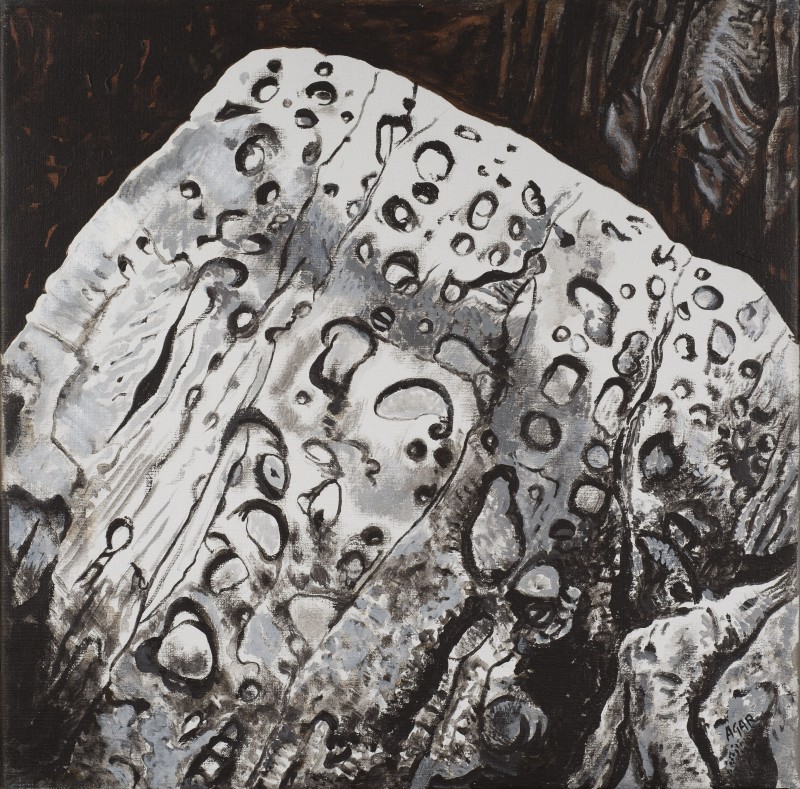 Eileen Agar RARock, 1985Acrylic on canvas60 x 60 cmSigned lower right%3Cdiv%20class%3D%22artist%22%3E%3Cspan%20class%3D%22artist%22%3E%3Cstrong%3EEileen%20Agar%20RA%3C/strong%3E%3C/span%3E%3C/div%3E%0D%3Cdiv%20class%3D%22title%22%3E%3Cem%3ERock%3C/em%3E%2C%201985%3C/div%3E%0D%3Cdiv%20class%3D%22signed_and_dated%22%3ESigned%20lower%20right%3C/div%3E%0D%3Cdiv%20class%3D%22medium%22%3EAcrylic%20on%20canvas%3C/div%3E%0D%3Cdiv%20class%3D%22dimensions%22%3E60%20x%2060%20cm%3C/div%3E
Eileen Agar RARock, 1985Acrylic on canvas60 x 60 cmSigned lower right%3Cdiv%20class%3D%22artist%22%3E%3Cspan%20class%3D%22artist%22%3E%3Cstrong%3EEileen%20Agar%20RA%3C/strong%3E%3C/span%3E%3C/div%3E%0D%3Cdiv%20class%3D%22title%22%3E%3Cem%3ERock%3C/em%3E%2C%201985%3C/div%3E%0D%3Cdiv%20class%3D%22signed_and_dated%22%3ESigned%20lower%20right%3C/div%3E%0D%3Cdiv%20class%3D%22medium%22%3EAcrylic%20on%20canvas%3C/div%3E%0D%3Cdiv%20class%3D%22dimensions%22%3E60%20x%2060%20cm%3C/div%3E -
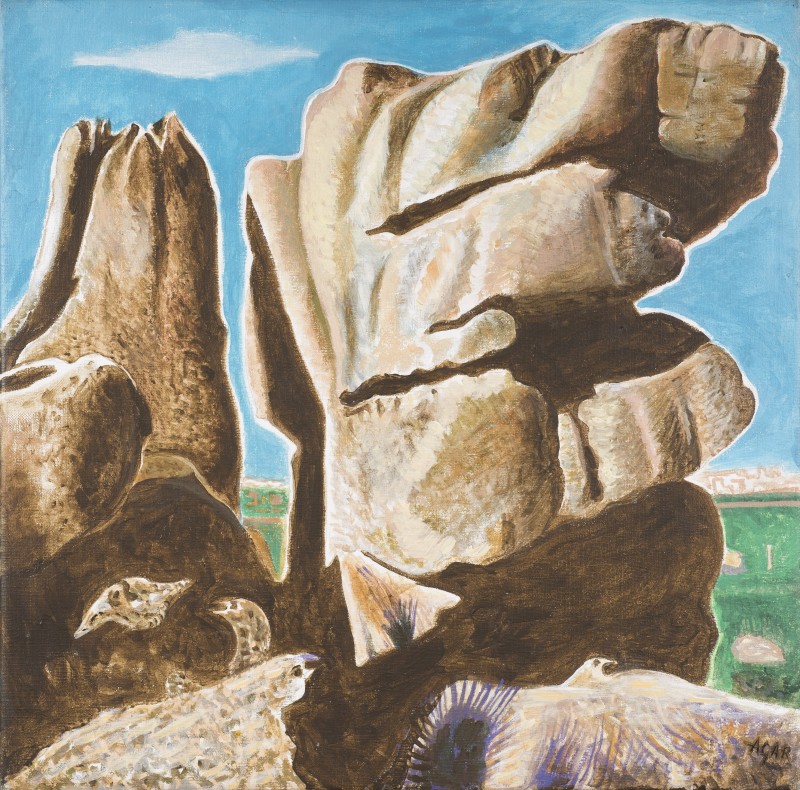 Eileen Agar RARock 8, 1985Acrylic on canvas60 x 60 cmSigned lower right; signed, dated and titled verso%3Cdiv%20class%3D%22artist%22%3E%3Cspan%20class%3D%22artist%22%3E%3Cstrong%3EEileen%20Agar%20RA%3C/strong%3E%3C/span%3E%3C/div%3E%0D%3Cdiv%20class%3D%22title%22%3E%3Cem%3ERock%208%3C/em%3E%2C%201985%3C/div%3E%0D%3Cdiv%20class%3D%22signed_and_dated%22%3ESigned%20lower%20right%3B%20signed%2C%20dated%20and%20titled%20verso%3C/div%3E%0D%3Cdiv%20class%3D%22medium%22%3EAcrylic%20on%20canvas%3C/div%3E%0D%3Cdiv%20class%3D%22dimensions%22%3E60%20x%2060%20cm%3C/div%3E
Eileen Agar RARock 8, 1985Acrylic on canvas60 x 60 cmSigned lower right; signed, dated and titled verso%3Cdiv%20class%3D%22artist%22%3E%3Cspan%20class%3D%22artist%22%3E%3Cstrong%3EEileen%20Agar%20RA%3C/strong%3E%3C/span%3E%3C/div%3E%0D%3Cdiv%20class%3D%22title%22%3E%3Cem%3ERock%208%3C/em%3E%2C%201985%3C/div%3E%0D%3Cdiv%20class%3D%22signed_and_dated%22%3ESigned%20lower%20right%3B%20signed%2C%20dated%20and%20titled%20verso%3C/div%3E%0D%3Cdiv%20class%3D%22medium%22%3EAcrylic%20on%20canvas%3C/div%3E%0D%3Cdiv%20class%3D%22dimensions%22%3E60%20x%2060%20cm%3C/div%3E -
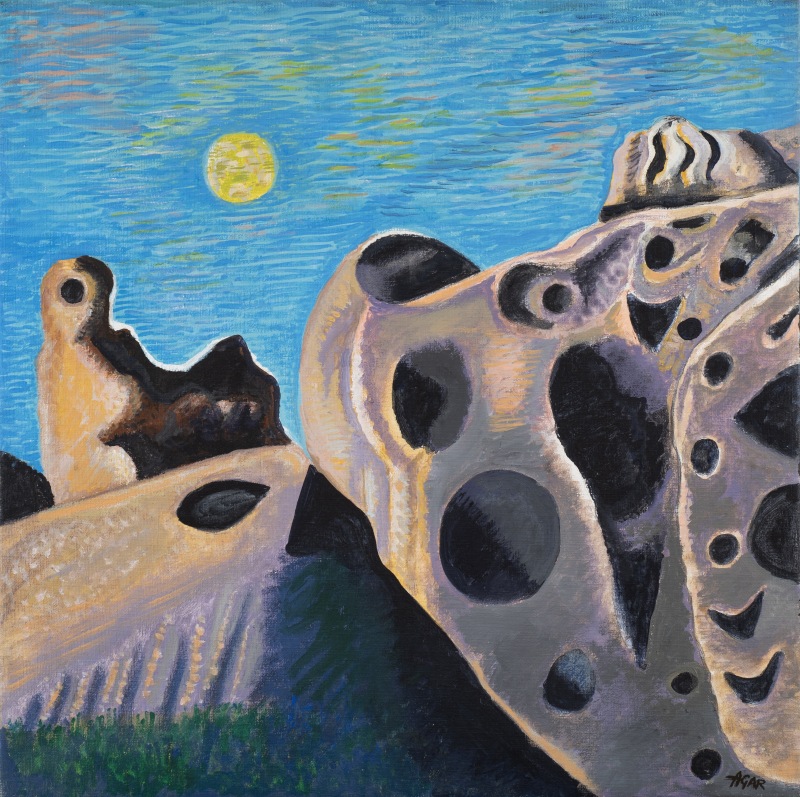 Eileen Agar RARocks at Brittany, 1985Acrylic on canvas61 x 61 cm%3Cdiv%20class%3D%22artist%22%3E%3Cspan%20class%3D%22artist%22%3E%3Cstrong%3EEileen%20Agar%20RA%3C/strong%3E%3C/span%3E%3C/div%3E%0D%3Cdiv%20class%3D%22title%22%3E%3Cem%3ERocks%20at%20Brittany%3C/em%3E%2C%201985%3C/div%3E%0D%3Cdiv%20class%3D%22medium%22%3EAcrylic%20on%20canvas%3C/div%3E%0D%3Cdiv%20class%3D%22dimensions%22%3E61%20x%2061%20cm%3C/div%3E
Eileen Agar RARocks at Brittany, 1985Acrylic on canvas61 x 61 cm%3Cdiv%20class%3D%22artist%22%3E%3Cspan%20class%3D%22artist%22%3E%3Cstrong%3EEileen%20Agar%20RA%3C/strong%3E%3C/span%3E%3C/div%3E%0D%3Cdiv%20class%3D%22title%22%3E%3Cem%3ERocks%20at%20Brittany%3C/em%3E%2C%201985%3C/div%3E%0D%3Cdiv%20class%3D%22medium%22%3EAcrylic%20on%20canvas%3C/div%3E%0D%3Cdiv%20class%3D%22dimensions%22%3E61%20x%2061%20cm%3C/div%3E -
 Eileen Agar RAThe Breakwater, 1985Acrylic on canvas60 x 60 cmSigned lower right%3Cdiv%20class%3D%22artist%22%3E%3Cspan%20class%3D%22artist%22%3E%3Cstrong%3EEileen%20Agar%20RA%3C/strong%3E%3C/span%3E%3C/div%3E%0D%3Cdiv%20class%3D%22title%22%3E%3Cem%3EThe%20Breakwater%3C/em%3E%2C%201985%3C/div%3E%0D%3Cdiv%20class%3D%22signed_and_dated%22%3ESigned%20lower%20right%3C/div%3E%0D%3Cdiv%20class%3D%22medium%22%3EAcrylic%20on%20canvas%3C/div%3E%0D%3Cdiv%20class%3D%22dimensions%22%3E60%20x%2060%20cm%3C/div%3E
Eileen Agar RAThe Breakwater, 1985Acrylic on canvas60 x 60 cmSigned lower right%3Cdiv%20class%3D%22artist%22%3E%3Cspan%20class%3D%22artist%22%3E%3Cstrong%3EEileen%20Agar%20RA%3C/strong%3E%3C/span%3E%3C/div%3E%0D%3Cdiv%20class%3D%22title%22%3E%3Cem%3EThe%20Breakwater%3C/em%3E%2C%201985%3C/div%3E%0D%3Cdiv%20class%3D%22signed_and_dated%22%3ESigned%20lower%20right%3C/div%3E%0D%3Cdiv%20class%3D%22medium%22%3EAcrylic%20on%20canvas%3C/div%3E%0D%3Cdiv%20class%3D%22dimensions%22%3E60%20x%2060%20cm%3C/div%3E -
 Eileen Agar RAUntitled, 1984Felt-tip, pastel and collage on paper30 x 21 cmSigned and dated lower right%3Cdiv%20class%3D%22artist%22%3E%3Cspan%20class%3D%22artist%22%3E%3Cstrong%3EEileen%20Agar%20RA%3C/strong%3E%3C/span%3E%3C/div%3E%0D%3Cdiv%20class%3D%22title%22%3E%3Cem%3EUntitled%3C/em%3E%2C%201984%3C/div%3E%0D%3Cdiv%20class%3D%22signed_and_dated%22%3ESigned%20and%20dated%20lower%20right%3C/div%3E%0D%3Cdiv%20class%3D%22medium%22%3EFelt-tip%2C%20pastel%20and%20collage%20on%20paper%3C/div%3E%0D%3Cdiv%20class%3D%22dimensions%22%3E30%20x%2021%20cm%3C/div%3E
Eileen Agar RAUntitled, 1984Felt-tip, pastel and collage on paper30 x 21 cmSigned and dated lower right%3Cdiv%20class%3D%22artist%22%3E%3Cspan%20class%3D%22artist%22%3E%3Cstrong%3EEileen%20Agar%20RA%3C/strong%3E%3C/span%3E%3C/div%3E%0D%3Cdiv%20class%3D%22title%22%3E%3Cem%3EUntitled%3C/em%3E%2C%201984%3C/div%3E%0D%3Cdiv%20class%3D%22signed_and_dated%22%3ESigned%20and%20dated%20lower%20right%3C/div%3E%0D%3Cdiv%20class%3D%22medium%22%3EFelt-tip%2C%20pastel%20and%20collage%20on%20paper%3C/div%3E%0D%3Cdiv%20class%3D%22dimensions%22%3E30%20x%2021%20cm%3C/div%3E -
 Eileen Agar RAMusical Figure, 1983Acrylic on canvas61 x 76.2cm%3Cdiv%20class%3D%22artist%22%3E%3Cspan%20class%3D%22artist%22%3E%3Cstrong%3EEileen%20Agar%20RA%3C/strong%3E%3C/span%3E%3C/div%3E%0D%3Cdiv%20class%3D%22title%22%3E%3Cem%3EMusical%20Figure%3C/em%3E%2C%201983%3C/div%3E%0D%3Cdiv%20class%3D%22medium%22%3EAcrylic%20on%20canvas%3C/div%3E%0D%3Cdiv%20class%3D%22dimensions%22%3E61%20x%2076.2cm%3C/div%3E
Eileen Agar RAMusical Figure, 1983Acrylic on canvas61 x 76.2cm%3Cdiv%20class%3D%22artist%22%3E%3Cspan%20class%3D%22artist%22%3E%3Cstrong%3EEileen%20Agar%20RA%3C/strong%3E%3C/span%3E%3C/div%3E%0D%3Cdiv%20class%3D%22title%22%3E%3Cem%3EMusical%20Figure%3C/em%3E%2C%201983%3C/div%3E%0D%3Cdiv%20class%3D%22medium%22%3EAcrylic%20on%20canvas%3C/div%3E%0D%3Cdiv%20class%3D%22dimensions%22%3E61%20x%2076.2cm%3C/div%3E -
 Eileen Agar RAThe Desert, 1983Mixed media on paper21 x 24 cmSigned and dated lower right; titled verso%3Cdiv%20class%3D%22artist%22%3E%3Cspan%20class%3D%22artist%22%3E%3Cstrong%3EEileen%20Agar%20RA%3C/strong%3E%3C/span%3E%3C/div%3E%0D%3Cdiv%20class%3D%22title%22%3E%3Cem%3EThe%20Desert%3C/em%3E%2C%201983%3C/div%3E%0D%3Cdiv%20class%3D%22signed_and_dated%22%3ESigned%20and%20dated%20lower%20right%3B%20titled%20verso%3C/div%3E%0D%3Cdiv%20class%3D%22medium%22%3EMixed%20media%20on%20paper%3C/div%3E%0D%3Cdiv%20class%3D%22dimensions%22%3E21%20x%2024%20cm%3C/div%3E
Eileen Agar RAThe Desert, 1983Mixed media on paper21 x 24 cmSigned and dated lower right; titled verso%3Cdiv%20class%3D%22artist%22%3E%3Cspan%20class%3D%22artist%22%3E%3Cstrong%3EEileen%20Agar%20RA%3C/strong%3E%3C/span%3E%3C/div%3E%0D%3Cdiv%20class%3D%22title%22%3E%3Cem%3EThe%20Desert%3C/em%3E%2C%201983%3C/div%3E%0D%3Cdiv%20class%3D%22signed_and_dated%22%3ESigned%20and%20dated%20lower%20right%3B%20titled%20verso%3C/div%3E%0D%3Cdiv%20class%3D%22medium%22%3EMixed%20media%20on%20paper%3C/div%3E%0D%3Cdiv%20class%3D%22dimensions%22%3E21%20x%2024%20cm%3C/div%3E -
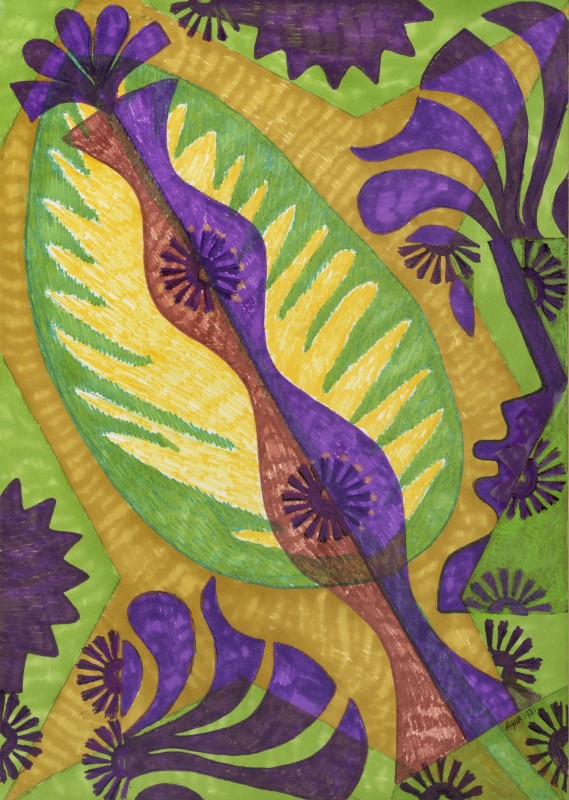 Eileen Agar RATropicana, 1981Felt-tip on paper40 x 27 cmSigned and dated lower right; titled verso%3Cdiv%20class%3D%22artist%22%3E%3Cspan%20class%3D%22artist%22%3E%3Cstrong%3EEileen%20Agar%20RA%3C/strong%3E%3C/span%3E%3C/div%3E%0D%3Cdiv%20class%3D%22title%22%3E%3Cem%3ETropicana%3C/em%3E%2C%201981%3C/div%3E%0D%3Cdiv%20class%3D%22signed_and_dated%22%3ESigned%20and%20dated%20lower%20right%3B%20titled%20verso%3C/div%3E%0D%3Cdiv%20class%3D%22medium%22%3EFelt-tip%20on%20paper%3C/div%3E%0D%3Cdiv%20class%3D%22dimensions%22%3E40%20x%2027%20cm%3C/div%3E
Eileen Agar RATropicana, 1981Felt-tip on paper40 x 27 cmSigned and dated lower right; titled verso%3Cdiv%20class%3D%22artist%22%3E%3Cspan%20class%3D%22artist%22%3E%3Cstrong%3EEileen%20Agar%20RA%3C/strong%3E%3C/span%3E%3C/div%3E%0D%3Cdiv%20class%3D%22title%22%3E%3Cem%3ETropicana%3C/em%3E%2C%201981%3C/div%3E%0D%3Cdiv%20class%3D%22signed_and_dated%22%3ESigned%20and%20dated%20lower%20right%3B%20titled%20verso%3C/div%3E%0D%3Cdiv%20class%3D%22medium%22%3EFelt-tip%20on%20paper%3C/div%3E%0D%3Cdiv%20class%3D%22dimensions%22%3E40%20x%2027%20cm%3C/div%3E -
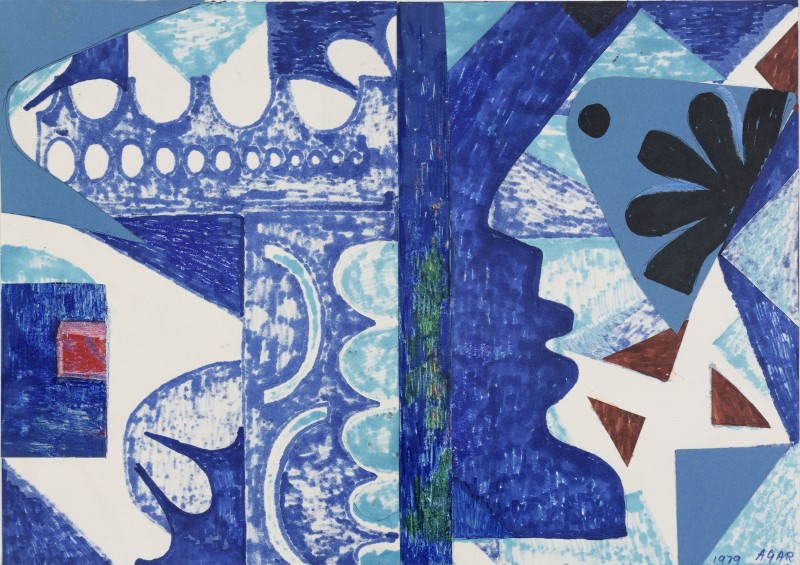 Eileen Agar RAUntitled, 1979Mixed media and collage on paper21 x 29 cmSigned and dated lower right%3Cdiv%20class%3D%22artist%22%3E%3Cspan%20class%3D%22artist%22%3E%3Cstrong%3EEileen%20Agar%20RA%3C/strong%3E%3C/span%3E%3C/div%3E%0D%3Cdiv%20class%3D%22title%22%3E%3Cem%3EUntitled%3C/em%3E%2C%201979%3C/div%3E%0D%3Cdiv%20class%3D%22signed_and_dated%22%3ESigned%20and%20dated%20lower%20right%3C/div%3E%0D%3Cdiv%20class%3D%22medium%22%3EMixed%20media%20and%20collage%20on%20paper%3C/div%3E%0D%3Cdiv%20class%3D%22dimensions%22%3E21%20x%2029%20cm%3C/div%3E
Eileen Agar RAUntitled, 1979Mixed media and collage on paper21 x 29 cmSigned and dated lower right%3Cdiv%20class%3D%22artist%22%3E%3Cspan%20class%3D%22artist%22%3E%3Cstrong%3EEileen%20Agar%20RA%3C/strong%3E%3C/span%3E%3C/div%3E%0D%3Cdiv%20class%3D%22title%22%3E%3Cem%3EUntitled%3C/em%3E%2C%201979%3C/div%3E%0D%3Cdiv%20class%3D%22signed_and_dated%22%3ESigned%20and%20dated%20lower%20right%3C/div%3E%0D%3Cdiv%20class%3D%22medium%22%3EMixed%20media%20and%20collage%20on%20paper%3C/div%3E%0D%3Cdiv%20class%3D%22dimensions%22%3E21%20x%2029%20cm%3C/div%3E -
 Eileen Agar RAFlower Palette, 1978Mixed media and collage on paper18 x 26 cmSigned and dated lower right%3Cdiv%20class%3D%22artist%22%3E%3Cspan%20class%3D%22artist%22%3E%3Cstrong%3EEileen%20Agar%20RA%3C/strong%3E%3C/span%3E%3C/div%3E%0D%3Cdiv%20class%3D%22title%22%3E%3Cem%3EFlower%20Palette%3C/em%3E%2C%201978%3C/div%3E%0D%3Cdiv%20class%3D%22signed_and_dated%22%3ESigned%20and%20dated%20lower%20right%3C/div%3E%0D%3Cdiv%20class%3D%22medium%22%3EMixed%20media%20and%20collage%20on%20paper%3C/div%3E%0D%3Cdiv%20class%3D%22dimensions%22%3E18%20x%2026%20cm%3C/div%3E
Eileen Agar RAFlower Palette, 1978Mixed media and collage on paper18 x 26 cmSigned and dated lower right%3Cdiv%20class%3D%22artist%22%3E%3Cspan%20class%3D%22artist%22%3E%3Cstrong%3EEileen%20Agar%20RA%3C/strong%3E%3C/span%3E%3C/div%3E%0D%3Cdiv%20class%3D%22title%22%3E%3Cem%3EFlower%20Palette%3C/em%3E%2C%201978%3C/div%3E%0D%3Cdiv%20class%3D%22signed_and_dated%22%3ESigned%20and%20dated%20lower%20right%3C/div%3E%0D%3Cdiv%20class%3D%22medium%22%3EMixed%20media%20and%20collage%20on%20paper%3C/div%3E%0D%3Cdiv%20class%3D%22dimensions%22%3E18%20x%2026%20cm%3C/div%3E -
 Eileen Agar RAUntitled (Woman with comb), 1975Mixed media on paper32 x 25 cmSigned and dated lower left%3Cdiv%20class%3D%22artist%22%3E%3Cspan%20class%3D%22artist%22%3E%3Cstrong%3EEileen%20Agar%20RA%3C/strong%3E%3C/span%3E%3C/div%3E%0D%3Cdiv%20class%3D%22title%22%3E%3Cem%3EUntitled%20%28Woman%20with%20comb%29%3C/em%3E%2C%201975%3C/div%3E%0D%3Cdiv%20class%3D%22signed_and_dated%22%3ESigned%20and%20dated%20lower%20left%3C/div%3E%0D%3Cdiv%20class%3D%22medium%22%3EMixed%20media%20on%20paper%3C/div%3E%0D%3Cdiv%20class%3D%22dimensions%22%3E32%20x%2025%20cm%3C/div%3E
Eileen Agar RAUntitled (Woman with comb), 1975Mixed media on paper32 x 25 cmSigned and dated lower left%3Cdiv%20class%3D%22artist%22%3E%3Cspan%20class%3D%22artist%22%3E%3Cstrong%3EEileen%20Agar%20RA%3C/strong%3E%3C/span%3E%3C/div%3E%0D%3Cdiv%20class%3D%22title%22%3E%3Cem%3EUntitled%20%28Woman%20with%20comb%29%3C/em%3E%2C%201975%3C/div%3E%0D%3Cdiv%20class%3D%22signed_and_dated%22%3ESigned%20and%20dated%20lower%20left%3C/div%3E%0D%3Cdiv%20class%3D%22medium%22%3EMixed%20media%20on%20paper%3C/div%3E%0D%3Cdiv%20class%3D%22dimensions%22%3E32%20x%2025%20cm%3C/div%3E -
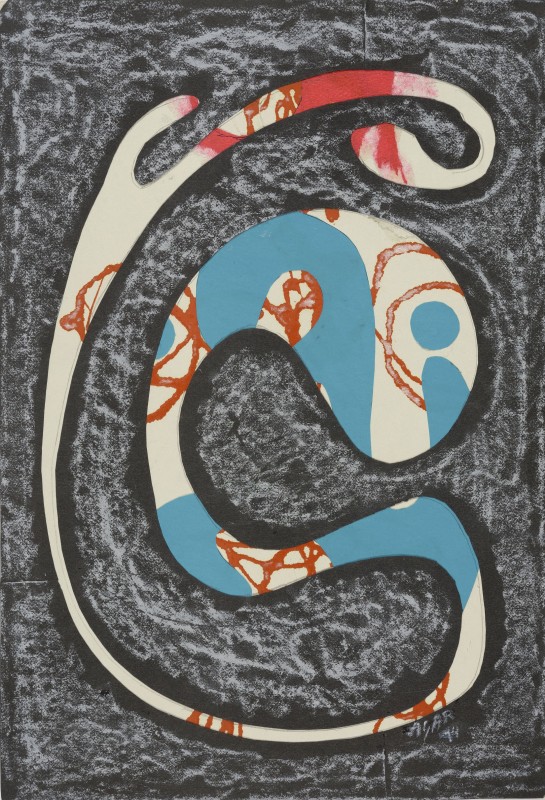 Eileen Agar RAUntitled, 1974Mixed media and collage on card38 x 26 cmSigned and dated lower right%3Cdiv%20class%3D%22artist%22%3E%3Cspan%20class%3D%22artist%22%3E%3Cstrong%3EEileen%20Agar%20RA%3C/strong%3E%3C/span%3E%3C/div%3E%0D%3Cdiv%20class%3D%22title%22%3E%3Cem%3EUntitled%3C/em%3E%2C%201974%3C/div%3E%0D%3Cdiv%20class%3D%22signed_and_dated%22%3ESigned%20and%20dated%20lower%20right%3C/div%3E%0D%3Cdiv%20class%3D%22medium%22%3EMixed%20media%20and%20collage%20on%20card%3C/div%3E%0D%3Cdiv%20class%3D%22dimensions%22%3E38%20x%2026%20cm%3C/div%3E
Eileen Agar RAUntitled, 1974Mixed media and collage on card38 x 26 cmSigned and dated lower right%3Cdiv%20class%3D%22artist%22%3E%3Cspan%20class%3D%22artist%22%3E%3Cstrong%3EEileen%20Agar%20RA%3C/strong%3E%3C/span%3E%3C/div%3E%0D%3Cdiv%20class%3D%22title%22%3E%3Cem%3EUntitled%3C/em%3E%2C%201974%3C/div%3E%0D%3Cdiv%20class%3D%22signed_and_dated%22%3ESigned%20and%20dated%20lower%20right%3C/div%3E%0D%3Cdiv%20class%3D%22medium%22%3EMixed%20media%20and%20collage%20on%20card%3C/div%3E%0D%3Cdiv%20class%3D%22dimensions%22%3E38%20x%2026%20cm%3C/div%3E -
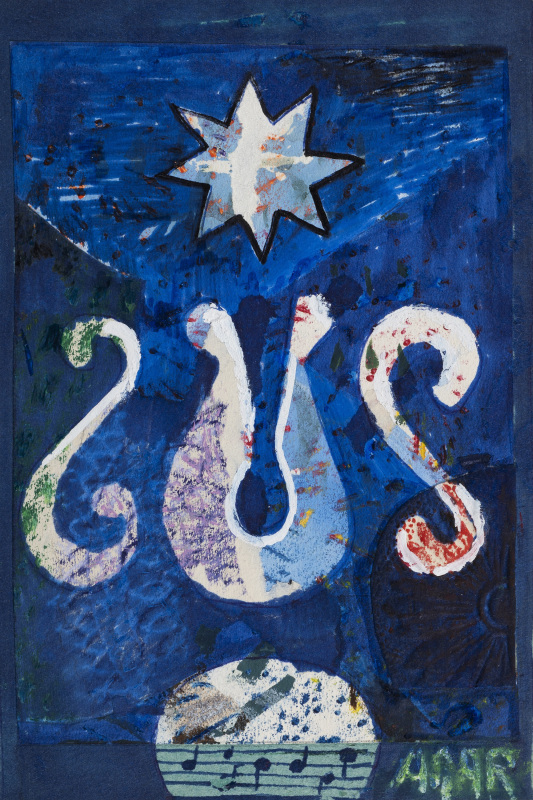 Eileen Agar RAUntitled, 1973Felt-tip pen, gouache, pastel, wax crayon frottage and collage on card laid on paperPOA%3Cdiv%20class%3D%22artist%22%3E%3Cspan%20class%3D%22artist%22%3E%3Cstrong%3EEileen%20Agar%20RA%3C/strong%3E%3C/span%3E%3C/div%3E%0D%3Cdiv%20class%3D%22title%22%3E%3Cem%3EUntitled%3C/em%3E%2C%201973%3C/div%3E%0D%3Cdiv%20class%3D%22signed_and_dated%22%3EPOA%3C/div%3E%0D%3Cdiv%20class%3D%22medium%22%3EFelt-tip%20pen%2C%20gouache%2C%20pastel%2C%20wax%20crayon%20frottage%20and%20collage%20on%20card%20laid%20on%20paper%3C/div%3E
Eileen Agar RAUntitled, 1973Felt-tip pen, gouache, pastel, wax crayon frottage and collage on card laid on paperPOA%3Cdiv%20class%3D%22artist%22%3E%3Cspan%20class%3D%22artist%22%3E%3Cstrong%3EEileen%20Agar%20RA%3C/strong%3E%3C/span%3E%3C/div%3E%0D%3Cdiv%20class%3D%22title%22%3E%3Cem%3EUntitled%3C/em%3E%2C%201973%3C/div%3E%0D%3Cdiv%20class%3D%22signed_and_dated%22%3EPOA%3C/div%3E%0D%3Cdiv%20class%3D%22medium%22%3EFelt-tip%20pen%2C%20gouache%2C%20pastel%2C%20wax%20crayon%20frottage%20and%20collage%20on%20card%20laid%20on%20paper%3C/div%3E -
 Eileen Agar RACollage on Wheels, 1972Acrylic and collage on canvas41 x 51 cmSigned lower right%3Cdiv%20class%3D%22artist%22%3E%3Cspan%20class%3D%22artist%22%3E%3Cstrong%3EEileen%20Agar%20RA%3C/strong%3E%3C/span%3E%3C/div%3E%0D%3Cdiv%20class%3D%22title%22%3E%3Cem%3ECollage%20on%20Wheels%3C/em%3E%2C%201972%3C/div%3E%0D%3Cdiv%20class%3D%22signed_and_dated%22%3ESigned%20lower%20right%3C/div%3E%0D%3Cdiv%20class%3D%22medium%22%3EAcrylic%20and%20collage%20on%20canvas%3C/div%3E%0D%3Cdiv%20class%3D%22dimensions%22%3E41%20x%2051%20cm%3C/div%3E
Eileen Agar RACollage on Wheels, 1972Acrylic and collage on canvas41 x 51 cmSigned lower right%3Cdiv%20class%3D%22artist%22%3E%3Cspan%20class%3D%22artist%22%3E%3Cstrong%3EEileen%20Agar%20RA%3C/strong%3E%3C/span%3E%3C/div%3E%0D%3Cdiv%20class%3D%22title%22%3E%3Cem%3ECollage%20on%20Wheels%3C/em%3E%2C%201972%3C/div%3E%0D%3Cdiv%20class%3D%22signed_and_dated%22%3ESigned%20lower%20right%3C/div%3E%0D%3Cdiv%20class%3D%22medium%22%3EAcrylic%20and%20collage%20on%20canvas%3C/div%3E%0D%3Cdiv%20class%3D%22dimensions%22%3E41%20x%2051%20cm%3C/div%3E -
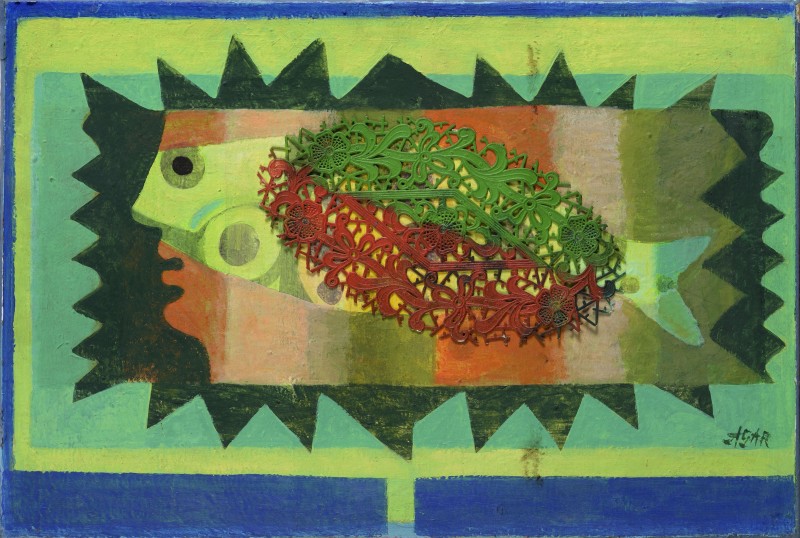 Eileen Agar RAOndine, 1972Acrylic and collage on canvas38 x 55 cmSigned lower right; signed, dated and titled verso%3Cdiv%20class%3D%22artist%22%3E%3Cspan%20class%3D%22artist%22%3E%3Cstrong%3EEileen%20Agar%20RA%3C/strong%3E%3C/span%3E%3C/div%3E%0D%3Cdiv%20class%3D%22title%22%3E%3Cem%3EOndine%3C/em%3E%2C%201972%3C/div%3E%0D%3Cdiv%20class%3D%22signed_and_dated%22%3ESigned%20lower%20right%3B%20signed%2C%20dated%20and%20titled%20verso%3C/div%3E%0D%3Cdiv%20class%3D%22medium%22%3EAcrylic%20and%20collage%20on%20canvas%3C/div%3E%0D%3Cdiv%20class%3D%22dimensions%22%3E38%20x%2055%20cm%3C/div%3E
Eileen Agar RAOndine, 1972Acrylic and collage on canvas38 x 55 cmSigned lower right; signed, dated and titled verso%3Cdiv%20class%3D%22artist%22%3E%3Cspan%20class%3D%22artist%22%3E%3Cstrong%3EEileen%20Agar%20RA%3C/strong%3E%3C/span%3E%3C/div%3E%0D%3Cdiv%20class%3D%22title%22%3E%3Cem%3EOndine%3C/em%3E%2C%201972%3C/div%3E%0D%3Cdiv%20class%3D%22signed_and_dated%22%3ESigned%20lower%20right%3B%20signed%2C%20dated%20and%20titled%20verso%3C/div%3E%0D%3Cdiv%20class%3D%22medium%22%3EAcrylic%20and%20collage%20on%20canvas%3C/div%3E%0D%3Cdiv%20class%3D%22dimensions%22%3E38%20x%2055%20cm%3C/div%3E -
 Eileen Agar RAUntitled, 1970s (c.)Collage, acrylic and pastel on paper35 x 53 cmSigned lower right%3Cdiv%20class%3D%22artist%22%3E%3Cspan%20class%3D%22artist%22%3E%3Cstrong%3EEileen%20Agar%20RA%3C/strong%3E%3C/span%3E%3C/div%3E%0D%3Cdiv%20class%3D%22title%22%3E%3Cem%3EUntitled%3C/em%3E%2C%201970s%20%28c.%29%3C/div%3E%0D%3Cdiv%20class%3D%22signed_and_dated%22%3ESigned%20lower%20right%3C/div%3E%0D%3Cdiv%20class%3D%22medium%22%3ECollage%2C%20acrylic%20and%20pastel%20on%20paper%3C/div%3E%0D%3Cdiv%20class%3D%22dimensions%22%3E35%20x%2053%20cm%3C/div%3E
Eileen Agar RAUntitled, 1970s (c.)Collage, acrylic and pastel on paper35 x 53 cmSigned lower right%3Cdiv%20class%3D%22artist%22%3E%3Cspan%20class%3D%22artist%22%3E%3Cstrong%3EEileen%20Agar%20RA%3C/strong%3E%3C/span%3E%3C/div%3E%0D%3Cdiv%20class%3D%22title%22%3E%3Cem%3EUntitled%3C/em%3E%2C%201970s%20%28c.%29%3C/div%3E%0D%3Cdiv%20class%3D%22signed_and_dated%22%3ESigned%20lower%20right%3C/div%3E%0D%3Cdiv%20class%3D%22medium%22%3ECollage%2C%20acrylic%20and%20pastel%20on%20paper%3C/div%3E%0D%3Cdiv%20class%3D%22dimensions%22%3E35%20x%2053%20cm%3C/div%3E -
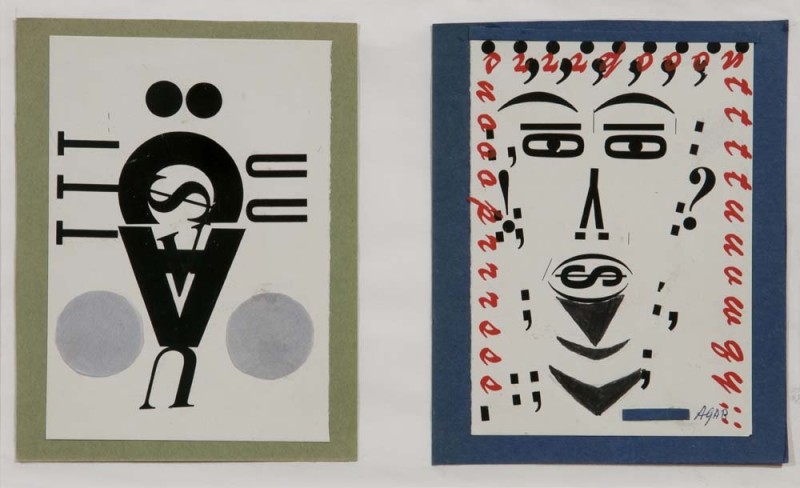 Eileen Agar RALetraset Drawings, 1970Mixed media on paper21 x 29 cmSigned lower right%3Cdiv%20class%3D%22artist%22%3E%3Cspan%20class%3D%22artist%22%3E%3Cstrong%3EEileen%20Agar%20RA%3C/strong%3E%3C/span%3E%3C/div%3E%0D%3Cdiv%20class%3D%22title%22%3E%3Cem%3ELetraset%20Drawings%3C/em%3E%2C%201970%3C/div%3E%0D%3Cdiv%20class%3D%22signed_and_dated%22%3ESigned%20lower%20right%3C/div%3E%0D%3Cdiv%20class%3D%22medium%22%3EMixed%20media%20on%20paper%3C/div%3E%0D%3Cdiv%20class%3D%22dimensions%22%3E21%20x%2029%20cm%3C/div%3E
Eileen Agar RALetraset Drawings, 1970Mixed media on paper21 x 29 cmSigned lower right%3Cdiv%20class%3D%22artist%22%3E%3Cspan%20class%3D%22artist%22%3E%3Cstrong%3EEileen%20Agar%20RA%3C/strong%3E%3C/span%3E%3C/div%3E%0D%3Cdiv%20class%3D%22title%22%3E%3Cem%3ELetraset%20Drawings%3C/em%3E%2C%201970%3C/div%3E%0D%3Cdiv%20class%3D%22signed_and_dated%22%3ESigned%20lower%20right%3C/div%3E%0D%3Cdiv%20class%3D%22medium%22%3EMixed%20media%20on%20paper%3C/div%3E%0D%3Cdiv%20class%3D%22dimensions%22%3E21%20x%2029%20cm%3C/div%3E -
 Eileen Agar RAUntitled (Figures and Letters), 1970Collage and mixed media on paper20 x 29 cmSigned lower right%3Cdiv%20class%3D%22artist%22%3E%3Cspan%20class%3D%22artist%22%3E%3Cstrong%3EEileen%20Agar%20RA%3C/strong%3E%3C/span%3E%3C/div%3E%0D%3Cdiv%20class%3D%22title%22%3E%3Cem%3EUntitled%20%28Figures%20and%20Letters%29%3C/em%3E%2C%201970%3C/div%3E%0D%3Cdiv%20class%3D%22signed_and_dated%22%3ESigned%20lower%20right%3C/div%3E%0D%3Cdiv%20class%3D%22medium%22%3ECollage%20and%20mixed%20media%20on%20paper%3C/div%3E%0D%3Cdiv%20class%3D%22dimensions%22%3E20%20x%2029%20cm%3C/div%3E
Eileen Agar RAUntitled (Figures and Letters), 1970Collage and mixed media on paper20 x 29 cmSigned lower right%3Cdiv%20class%3D%22artist%22%3E%3Cspan%20class%3D%22artist%22%3E%3Cstrong%3EEileen%20Agar%20RA%3C/strong%3E%3C/span%3E%3C/div%3E%0D%3Cdiv%20class%3D%22title%22%3E%3Cem%3EUntitled%20%28Figures%20and%20Letters%29%3C/em%3E%2C%201970%3C/div%3E%0D%3Cdiv%20class%3D%22signed_and_dated%22%3ESigned%20lower%20right%3C/div%3E%0D%3Cdiv%20class%3D%22medium%22%3ECollage%20and%20mixed%20media%20on%20paper%3C/div%3E%0D%3Cdiv%20class%3D%22dimensions%22%3E20%20x%2029%20cm%3C/div%3E -
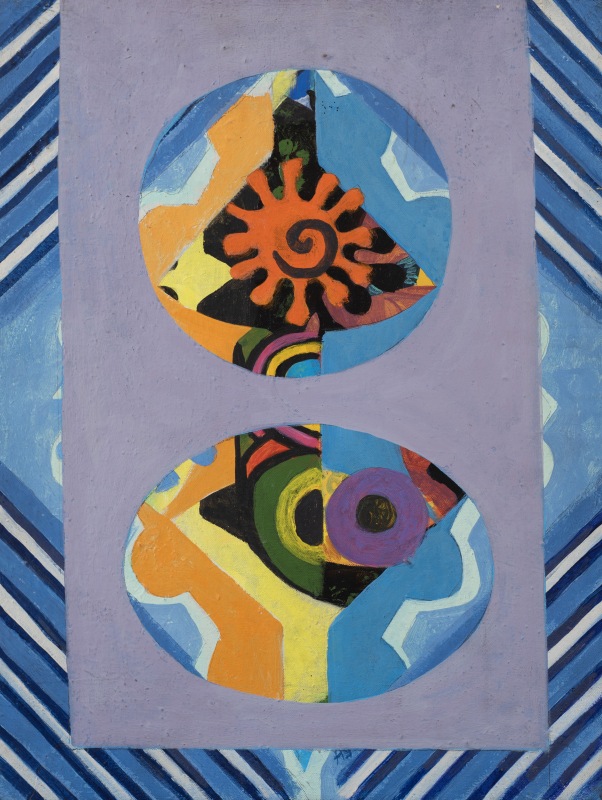 Eileen Agar RATwo Worlds, 1969Acrylic on canvas41 x 30.5 cm%3Cdiv%20class%3D%22artist%22%3E%3Cspan%20class%3D%22artist%22%3E%3Cstrong%3EEileen%20Agar%20RA%3C/strong%3E%3C/span%3E%3C/div%3E%0D%3Cdiv%20class%3D%22title%22%3E%3Cem%3ETwo%20Worlds%3C/em%3E%2C%201969%3C/div%3E%0D%3Cdiv%20class%3D%22medium%22%3EAcrylic%20on%20canvas%3C/div%3E%0D%3Cdiv%20class%3D%22dimensions%22%3E41%20x%2030.5%20cm%3C/div%3E
Eileen Agar RATwo Worlds, 1969Acrylic on canvas41 x 30.5 cm%3Cdiv%20class%3D%22artist%22%3E%3Cspan%20class%3D%22artist%22%3E%3Cstrong%3EEileen%20Agar%20RA%3C/strong%3E%3C/span%3E%3C/div%3E%0D%3Cdiv%20class%3D%22title%22%3E%3Cem%3ETwo%20Worlds%3C/em%3E%2C%201969%3C/div%3E%0D%3Cdiv%20class%3D%22medium%22%3EAcrylic%20on%20canvas%3C/div%3E%0D%3Cdiv%20class%3D%22dimensions%22%3E41%20x%2030.5%20cm%3C/div%3E -
 Eileen Agar RABarbaric Jewels, 1967Mixed media and found objects on board36 x 46 cmSigned lower right; titled and dated verso%3Cdiv%20class%3D%22artist%22%3E%3Cspan%20class%3D%22artist%22%3E%3Cstrong%3EEileen%20Agar%20RA%3C/strong%3E%3C/span%3E%3C/div%3E%0D%3Cdiv%20class%3D%22title%22%3E%3Cem%3EBarbaric%20Jewels%3C/em%3E%2C%201967%3C/div%3E%0D%3Cdiv%20class%3D%22signed_and_dated%22%3ESigned%20lower%20right%3B%20titled%20and%20dated%20verso%3C/div%3E%0D%3Cdiv%20class%3D%22medium%22%3EMixed%20media%20and%20found%20objects%20on%20board%3C/div%3E%0D%3Cdiv%20class%3D%22dimensions%22%3E36%20x%2046%20cm%3C/div%3E
Eileen Agar RABarbaric Jewels, 1967Mixed media and found objects on board36 x 46 cmSigned lower right; titled and dated verso%3Cdiv%20class%3D%22artist%22%3E%3Cspan%20class%3D%22artist%22%3E%3Cstrong%3EEileen%20Agar%20RA%3C/strong%3E%3C/span%3E%3C/div%3E%0D%3Cdiv%20class%3D%22title%22%3E%3Cem%3EBarbaric%20Jewels%3C/em%3E%2C%201967%3C/div%3E%0D%3Cdiv%20class%3D%22signed_and_dated%22%3ESigned%20lower%20right%3B%20titled%20and%20dated%20verso%3C/div%3E%0D%3Cdiv%20class%3D%22medium%22%3EMixed%20media%20and%20found%20objects%20on%20board%3C/div%3E%0D%3Cdiv%20class%3D%22dimensions%22%3E36%20x%2046%20cm%3C/div%3E -
 Eileen Agar RABeetles and Hand, 1966Ink and collage on card21 x 12 cm%3Cdiv%20class%3D%22artist%22%3E%3Cspan%20class%3D%22artist%22%3E%3Cstrong%3EEileen%20Agar%20RA%3C/strong%3E%3C/span%3E%3C/div%3E%0D%3Cdiv%20class%3D%22title%22%3E%3Cem%3EBeetles%20and%20Hand%3C/em%3E%2C%201966%3C/div%3E%0D%3Cdiv%20class%3D%22medium%22%3EInk%20and%20collage%20on%20card%3C/div%3E%0D%3Cdiv%20class%3D%22dimensions%22%3E21%20x%2012%20cm%3C/div%3E
Eileen Agar RABeetles and Hand, 1966Ink and collage on card21 x 12 cm%3Cdiv%20class%3D%22artist%22%3E%3Cspan%20class%3D%22artist%22%3E%3Cstrong%3EEileen%20Agar%20RA%3C/strong%3E%3C/span%3E%3C/div%3E%0D%3Cdiv%20class%3D%22title%22%3E%3Cem%3EBeetles%20and%20Hand%3C/em%3E%2C%201966%3C/div%3E%0D%3Cdiv%20class%3D%22medium%22%3EInk%20and%20collage%20on%20card%3C/div%3E%0D%3Cdiv%20class%3D%22dimensions%22%3E21%20x%2012%20cm%3C/div%3E -
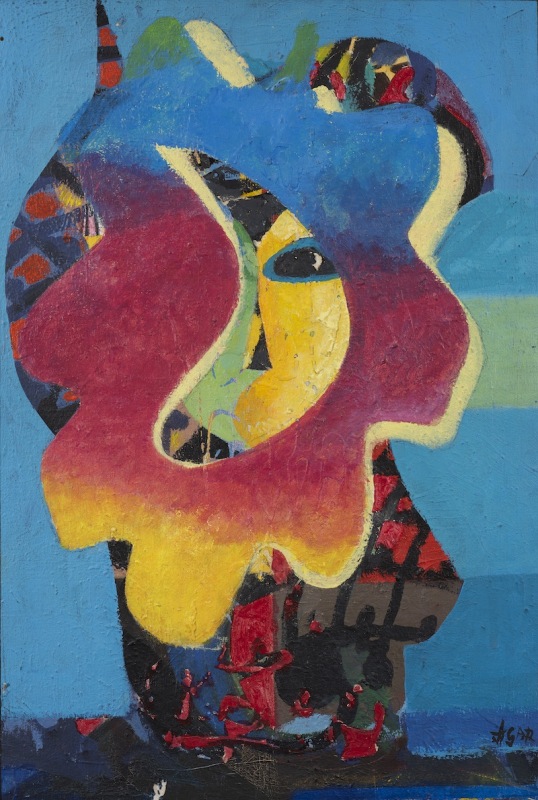 Eileen Agar RAFlowering of a Wing, 1966Oil and acrylic on canvas55.9 x 38.1cm%3Cdiv%20class%3D%22artist%22%3E%3Cspan%20class%3D%22artist%22%3E%3Cstrong%3EEileen%20Agar%20RA%3C/strong%3E%3C/span%3E%3C/div%3E%0D%3Cdiv%20class%3D%22title%22%3E%3Cem%3EFlowering%20of%20a%20Wing%3C/em%3E%2C%201966%3C/div%3E%0D%3Cdiv%20class%3D%22medium%22%3EOil%20and%20acrylic%20on%20canvas%3C/div%3E%0D%3Cdiv%20class%3D%22dimensions%22%3E55.9%20x%2038.1cm%3C/div%3E
Eileen Agar RAFlowering of a Wing, 1966Oil and acrylic on canvas55.9 x 38.1cm%3Cdiv%20class%3D%22artist%22%3E%3Cspan%20class%3D%22artist%22%3E%3Cstrong%3EEileen%20Agar%20RA%3C/strong%3E%3C/span%3E%3C/div%3E%0D%3Cdiv%20class%3D%22title%22%3E%3Cem%3EFlowering%20of%20a%20Wing%3C/em%3E%2C%201966%3C/div%3E%0D%3Cdiv%20class%3D%22medium%22%3EOil%20and%20acrylic%20on%20canvas%3C/div%3E%0D%3Cdiv%20class%3D%22dimensions%22%3E55.9%20x%2038.1cm%3C/div%3E -
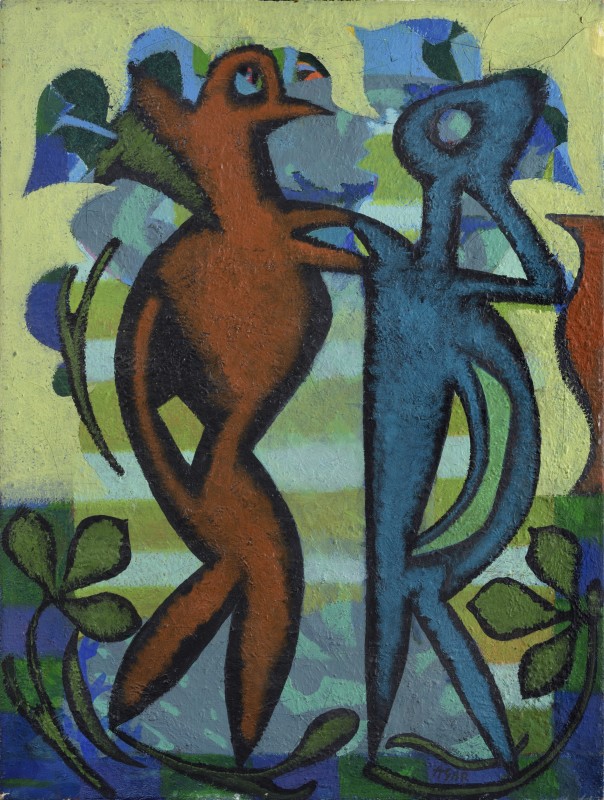 Eileen Agar RASilvanus, 1966Oil on canvas80 x 60 cmSigned lower right; titled and dated verso%3Cdiv%20class%3D%22artist%22%3E%3Cspan%20class%3D%22artist%22%3E%3Cstrong%3EEileen%20Agar%20RA%3C/strong%3E%3C/span%3E%3C/div%3E%0D%3Cdiv%20class%3D%22title%22%3E%3Cem%3ESilvanus%3C/em%3E%2C%201966%3C/div%3E%0D%3Cdiv%20class%3D%22signed_and_dated%22%3ESigned%20lower%20right%3B%20titled%20and%20dated%20verso%3C/div%3E%0D%3Cdiv%20class%3D%22medium%22%3EOil%20on%20canvas%3C/div%3E%0D%3Cdiv%20class%3D%22dimensions%22%3E80%20x%2060%20cm%3C/div%3E
Eileen Agar RASilvanus, 1966Oil on canvas80 x 60 cmSigned lower right; titled and dated verso%3Cdiv%20class%3D%22artist%22%3E%3Cspan%20class%3D%22artist%22%3E%3Cstrong%3EEileen%20Agar%20RA%3C/strong%3E%3C/span%3E%3C/div%3E%0D%3Cdiv%20class%3D%22title%22%3E%3Cem%3ESilvanus%3C/em%3E%2C%201966%3C/div%3E%0D%3Cdiv%20class%3D%22signed_and_dated%22%3ESigned%20lower%20right%3B%20titled%20and%20dated%20verso%3C/div%3E%0D%3Cdiv%20class%3D%22medium%22%3EOil%20on%20canvas%3C/div%3E%0D%3Cdiv%20class%3D%22dimensions%22%3E80%20x%2060%20cm%3C/div%3E -
 Eileen Agar RAThe Promenade, 1965Mixed media and collage on paper27 x 20 cmSigned and dated lower right; titled verso%3Cdiv%20class%3D%22artist%22%3E%3Cspan%20class%3D%22artist%22%3E%3Cstrong%3EEileen%20Agar%20RA%3C/strong%3E%3C/span%3E%3C/div%3E%0D%3Cdiv%20class%3D%22title%22%3E%3Cem%3EThe%20Promenade%3C/em%3E%2C%201965%3C/div%3E%0D%3Cdiv%20class%3D%22signed_and_dated%22%3ESigned%20and%20dated%20lower%20right%3B%20titled%20verso%3C/div%3E%0D%3Cdiv%20class%3D%22medium%22%3EMixed%20media%20and%20collage%20on%20paper%3C/div%3E%0D%3Cdiv%20class%3D%22dimensions%22%3E27%20x%2020%20cm%3C/div%3E
Eileen Agar RAThe Promenade, 1965Mixed media and collage on paper27 x 20 cmSigned and dated lower right; titled verso%3Cdiv%20class%3D%22artist%22%3E%3Cspan%20class%3D%22artist%22%3E%3Cstrong%3EEileen%20Agar%20RA%3C/strong%3E%3C/span%3E%3C/div%3E%0D%3Cdiv%20class%3D%22title%22%3E%3Cem%3EThe%20Promenade%3C/em%3E%2C%201965%3C/div%3E%0D%3Cdiv%20class%3D%22signed_and_dated%22%3ESigned%20and%20dated%20lower%20right%3B%20titled%20verso%3C/div%3E%0D%3Cdiv%20class%3D%22medium%22%3EMixed%20media%20and%20collage%20on%20paper%3C/div%3E%0D%3Cdiv%20class%3D%22dimensions%22%3E27%20x%2020%20cm%3C/div%3E -
 Eileen Agar rAStill Life, 1964 (c.)Acrylic on canvas63 x 76 cmSigned lower right; titled verso%3Cdiv%20class%3D%22artist%22%3E%3Cspan%20class%3D%22artist%22%3E%3Cstrong%3EEileen%20Agar%20rA%3C/strong%3E%3C/span%3E%3C/div%3E%0D%3Cdiv%20class%3D%22title%22%3E%3Cem%3EStill%20Life%3C/em%3E%2C%201964%20%28c.%29%3C/div%3E%0D%3Cdiv%20class%3D%22signed_and_dated%22%3ESigned%20lower%20right%3B%20titled%20verso%3C/div%3E%0D%3Cdiv%20class%3D%22medium%22%3EAcrylic%20on%20canvas%3C/div%3E%0D%3Cdiv%20class%3D%22dimensions%22%3E63%20x%2076%20cm%3C/div%3E
Eileen Agar rAStill Life, 1964 (c.)Acrylic on canvas63 x 76 cmSigned lower right; titled verso%3Cdiv%20class%3D%22artist%22%3E%3Cspan%20class%3D%22artist%22%3E%3Cstrong%3EEileen%20Agar%20rA%3C/strong%3E%3C/span%3E%3C/div%3E%0D%3Cdiv%20class%3D%22title%22%3E%3Cem%3EStill%20Life%3C/em%3E%2C%201964%20%28c.%29%3C/div%3E%0D%3Cdiv%20class%3D%22signed_and_dated%22%3ESigned%20lower%20right%3B%20titled%20verso%3C/div%3E%0D%3Cdiv%20class%3D%22medium%22%3EAcrylic%20on%20canvas%3C/div%3E%0D%3Cdiv%20class%3D%22dimensions%22%3E63%20x%2076%20cm%3C/div%3E -
 Eileen Agar RAFemale into Flower, 1962Oil on canvas73 x 99 cmSigned, dated and titled verso%3Cdiv%20class%3D%22artist%22%3E%3Cspan%20class%3D%22artist%22%3E%3Cstrong%3EEileen%20Agar%20RA%3C/strong%3E%3C/span%3E%3C/div%3E%0D%3Cdiv%20class%3D%22title%22%3E%3Cem%3EFemale%20into%20Flower%3C/em%3E%2C%201962%3C/div%3E%0D%3Cdiv%20class%3D%22signed_and_dated%22%3ESigned%2C%20dated%20and%20titled%20verso%3C/div%3E%0D%3Cdiv%20class%3D%22medium%22%3EOil%20on%20canvas%3C/div%3E%0D%3Cdiv%20class%3D%22dimensions%22%3E73%20x%2099%20cm%3C/div%3E
Eileen Agar RAFemale into Flower, 1962Oil on canvas73 x 99 cmSigned, dated and titled verso%3Cdiv%20class%3D%22artist%22%3E%3Cspan%20class%3D%22artist%22%3E%3Cstrong%3EEileen%20Agar%20RA%3C/strong%3E%3C/span%3E%3C/div%3E%0D%3Cdiv%20class%3D%22title%22%3E%3Cem%3EFemale%20into%20Flower%3C/em%3E%2C%201962%3C/div%3E%0D%3Cdiv%20class%3D%22signed_and_dated%22%3ESigned%2C%20dated%20and%20titled%20verso%3C/div%3E%0D%3Cdiv%20class%3D%22medium%22%3EOil%20on%20canvas%3C/div%3E%0D%3Cdiv%20class%3D%22dimensions%22%3E73%20x%2099%20cm%3C/div%3E -
 Eileen Agar RAFigures under Water, 1962Oil on board42 x 30.5 cmSigned lower right; dated and titled verso%3Cdiv%20class%3D%22artist%22%3E%3Cspan%20class%3D%22artist%22%3E%3Cstrong%3EEileen%20Agar%20RA%3C/strong%3E%3C/span%3E%3C/div%3E%0D%3Cdiv%20class%3D%22title%22%3E%3Cem%3EFigures%20under%20Water%3C/em%3E%2C%201962%3C/div%3E%0D%3Cdiv%20class%3D%22signed_and_dated%22%3ESigned%20lower%20right%3B%20dated%20and%20titled%20verso%3C/div%3E%0D%3Cdiv%20class%3D%22medium%22%3EOil%20on%20board%3C/div%3E%0D%3Cdiv%20class%3D%22dimensions%22%3E42%20x%2030.5%20cm%3C/div%3E
Eileen Agar RAFigures under Water, 1962Oil on board42 x 30.5 cmSigned lower right; dated and titled verso%3Cdiv%20class%3D%22artist%22%3E%3Cspan%20class%3D%22artist%22%3E%3Cstrong%3EEileen%20Agar%20RA%3C/strong%3E%3C/span%3E%3C/div%3E%0D%3Cdiv%20class%3D%22title%22%3E%3Cem%3EFigures%20under%20Water%3C/em%3E%2C%201962%3C/div%3E%0D%3Cdiv%20class%3D%22signed_and_dated%22%3ESigned%20lower%20right%3B%20dated%20and%20titled%20verso%3C/div%3E%0D%3Cdiv%20class%3D%22medium%22%3EOil%20on%20board%3C/div%3E%0D%3Cdiv%20class%3D%22dimensions%22%3E42%20x%2030.5%20cm%3C/div%3E -
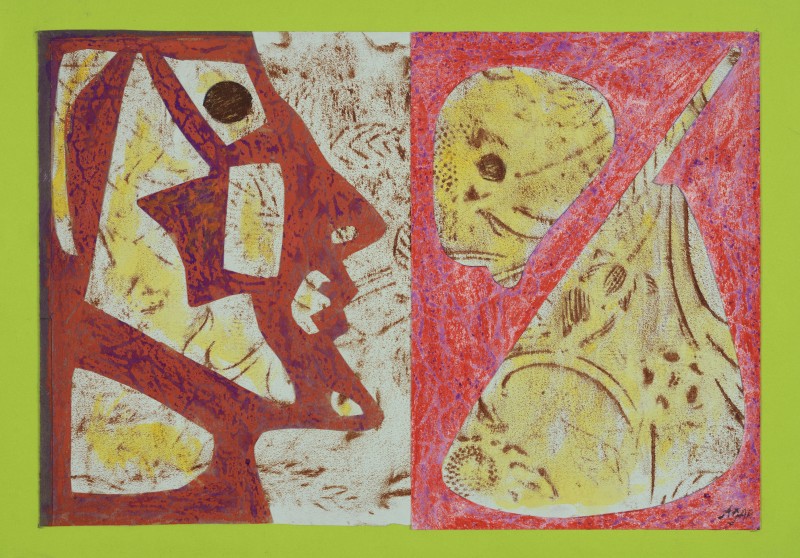 Eileen Agar RAEnigma, 1960s (c.)Mixed media and collage on paper29 x 42 cmSigned lower right; titled verso%3Cdiv%20class%3D%22artist%22%3E%3Cspan%20class%3D%22artist%22%3E%3Cstrong%3EEileen%20Agar%20RA%3C/strong%3E%3C/span%3E%3C/div%3E%0D%3Cdiv%20class%3D%22title%22%3E%3Cem%3EEnigma%3C/em%3E%2C%201960s%20%28c.%29%3C/div%3E%0D%3Cdiv%20class%3D%22signed_and_dated%22%3ESigned%20lower%20right%3B%20titled%20verso%3C/div%3E%0D%3Cdiv%20class%3D%22medium%22%3EMixed%20media%20and%20collage%20on%20paper%3C/div%3E%0D%3Cdiv%20class%3D%22dimensions%22%3E29%20x%2042%20cm%3C/div%3E
Eileen Agar RAEnigma, 1960s (c.)Mixed media and collage on paper29 x 42 cmSigned lower right; titled verso%3Cdiv%20class%3D%22artist%22%3E%3Cspan%20class%3D%22artist%22%3E%3Cstrong%3EEileen%20Agar%20RA%3C/strong%3E%3C/span%3E%3C/div%3E%0D%3Cdiv%20class%3D%22title%22%3E%3Cem%3EEnigma%3C/em%3E%2C%201960s%20%28c.%29%3C/div%3E%0D%3Cdiv%20class%3D%22signed_and_dated%22%3ESigned%20lower%20right%3B%20titled%20verso%3C/div%3E%0D%3Cdiv%20class%3D%22medium%22%3EMixed%20media%20and%20collage%20on%20paper%3C/div%3E%0D%3Cdiv%20class%3D%22dimensions%22%3E29%20x%2042%20cm%3C/div%3E -
 Eileen Agar RAWisdom Tooth, 1960s (c.)Acrylic on board58 x 69 cmSigned lower left; titled verso%3Cdiv%20class%3D%22artist%22%3E%3Cspan%20class%3D%22artist%22%3E%3Cstrong%3EEileen%20Agar%20RA%3C/strong%3E%3C/span%3E%3C/div%3E%0D%3Cdiv%20class%3D%22title%22%3E%3Cem%3EWisdom%20Tooth%3C/em%3E%2C%201960s%20%28c.%29%3C/div%3E%0D%3Cdiv%20class%3D%22signed_and_dated%22%3ESigned%20lower%20left%3B%20titled%20verso%3C/div%3E%0D%3Cdiv%20class%3D%22medium%22%3EAcrylic%20on%20board%3C/div%3E%0D%3Cdiv%20class%3D%22dimensions%22%3E58%20x%2069%20cm%3C/div%3E
Eileen Agar RAWisdom Tooth, 1960s (c.)Acrylic on board58 x 69 cmSigned lower left; titled verso%3Cdiv%20class%3D%22artist%22%3E%3Cspan%20class%3D%22artist%22%3E%3Cstrong%3EEileen%20Agar%20RA%3C/strong%3E%3C/span%3E%3C/div%3E%0D%3Cdiv%20class%3D%22title%22%3E%3Cem%3EWisdom%20Tooth%3C/em%3E%2C%201960s%20%28c.%29%3C/div%3E%0D%3Cdiv%20class%3D%22signed_and_dated%22%3ESigned%20lower%20left%3B%20titled%20verso%3C/div%3E%0D%3Cdiv%20class%3D%22medium%22%3EAcrylic%20on%20board%3C/div%3E%0D%3Cdiv%20class%3D%22dimensions%22%3E58%20x%2069%20cm%3C/div%3E -
 Eileen Agar RAUntitled, 1957Mixed media on paper22 x 31 cmSigned lower right; dated verso%3Cdiv%20class%3D%22artist%22%3E%3Cspan%20class%3D%22artist%22%3E%3Cstrong%3EEileen%20Agar%20RA%3C/strong%3E%3C/span%3E%3C/div%3E%0D%3Cdiv%20class%3D%22title%22%3E%3Cem%3EUntitled%3C/em%3E%2C%201957%3C/div%3E%0D%3Cdiv%20class%3D%22signed_and_dated%22%3ESigned%20lower%20right%3B%20dated%20verso%3C/div%3E%0D%3Cdiv%20class%3D%22medium%22%3EMixed%20media%20on%20paper%3C/div%3E%0D%3Cdiv%20class%3D%22dimensions%22%3E22%20x%2031%20cm%3C/div%3E
Eileen Agar RAUntitled, 1957Mixed media on paper22 x 31 cmSigned lower right; dated verso%3Cdiv%20class%3D%22artist%22%3E%3Cspan%20class%3D%22artist%22%3E%3Cstrong%3EEileen%20Agar%20RA%3C/strong%3E%3C/span%3E%3C/div%3E%0D%3Cdiv%20class%3D%22title%22%3E%3Cem%3EUntitled%3C/em%3E%2C%201957%3C/div%3E%0D%3Cdiv%20class%3D%22signed_and_dated%22%3ESigned%20lower%20right%3B%20dated%20verso%3C/div%3E%0D%3Cdiv%20class%3D%22medium%22%3EMixed%20media%20on%20paper%3C/div%3E%0D%3Cdiv%20class%3D%22dimensions%22%3E22%20x%2031%20cm%3C/div%3E -
 Eileen Agar RAFrottage, Tenerife, 1953Crayon on paper35 x 25 cm%3Cdiv%20class%3D%22artist%22%3E%3Cspan%20class%3D%22artist%22%3E%3Cstrong%3EEileen%20Agar%20RA%3C/strong%3E%3C/span%3E%3C/div%3E%0D%3Cdiv%20class%3D%22title%22%3E%3Cem%3EFrottage%2C%20Tenerife%3C/em%3E%2C%201953%3C/div%3E%0D%3Cdiv%20class%3D%22medium%22%3ECrayon%20on%20paper%3C/div%3E%0D%3Cdiv%20class%3D%22dimensions%22%3E35%20x%2025%20cm%3C/div%3E
Eileen Agar RAFrottage, Tenerife, 1953Crayon on paper35 x 25 cm%3Cdiv%20class%3D%22artist%22%3E%3Cspan%20class%3D%22artist%22%3E%3Cstrong%3EEileen%20Agar%20RA%3C/strong%3E%3C/span%3E%3C/div%3E%0D%3Cdiv%20class%3D%22title%22%3E%3Cem%3EFrottage%2C%20Tenerife%3C/em%3E%2C%201953%3C/div%3E%0D%3Cdiv%20class%3D%22medium%22%3ECrayon%20on%20paper%3C/div%3E%0D%3Cdiv%20class%3D%22dimensions%22%3E35%20x%2025%20cm%3C/div%3E -
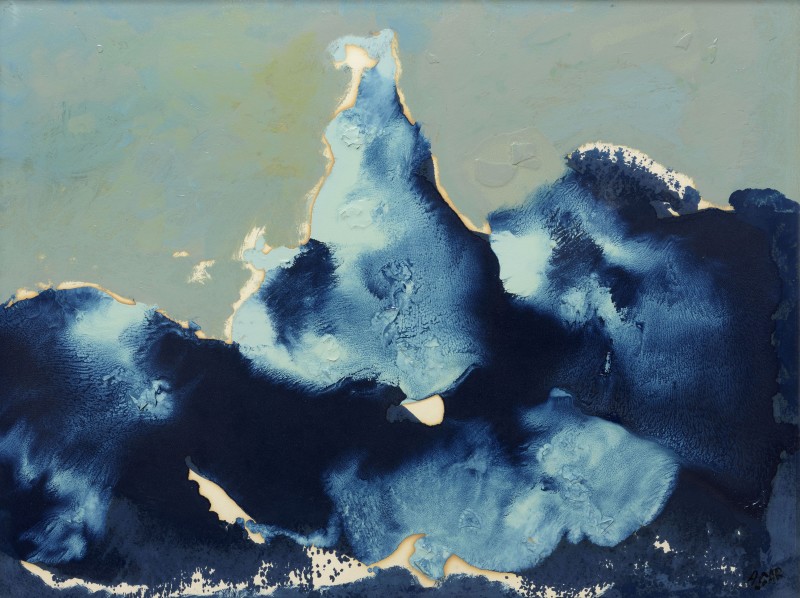 Eileen Agar RAThe Sea (the coast at Eastbourne), 1950Oil and enamel on board49 x 63 cmSigned lower right; titled and dated verso%3Cdiv%20class%3D%22artist%22%3E%3Cspan%20class%3D%22artist%22%3E%3Cstrong%3EEileen%20Agar%20RA%3C/strong%3E%3C/span%3E%3C/div%3E%0D%3Cdiv%20class%3D%22title%22%3E%3Cem%3EThe%20Sea%20%28the%20coast%20at%20Eastbourne%29%3C/em%3E%2C%201950%3C/div%3E%0D%3Cdiv%20class%3D%22signed_and_dated%22%3ESigned%20lower%20right%3B%20titled%20and%20dated%20verso%3C/div%3E%0D%3Cdiv%20class%3D%22medium%22%3EOil%20and%20enamel%20on%20board%3C/div%3E%0D%3Cdiv%20class%3D%22dimensions%22%3E49%20x%2063%20cm%3C/div%3E
Eileen Agar RAThe Sea (the coast at Eastbourne), 1950Oil and enamel on board49 x 63 cmSigned lower right; titled and dated verso%3Cdiv%20class%3D%22artist%22%3E%3Cspan%20class%3D%22artist%22%3E%3Cstrong%3EEileen%20Agar%20RA%3C/strong%3E%3C/span%3E%3C/div%3E%0D%3Cdiv%20class%3D%22title%22%3E%3Cem%3EThe%20Sea%20%28the%20coast%20at%20Eastbourne%29%3C/em%3E%2C%201950%3C/div%3E%0D%3Cdiv%20class%3D%22signed_and_dated%22%3ESigned%20lower%20right%3B%20titled%20and%20dated%20verso%3C/div%3E%0D%3Cdiv%20class%3D%22medium%22%3EOil%20and%20enamel%20on%20board%3C/div%3E%0D%3Cdiv%20class%3D%22dimensions%22%3E49%20x%2063%20cm%3C/div%3E -
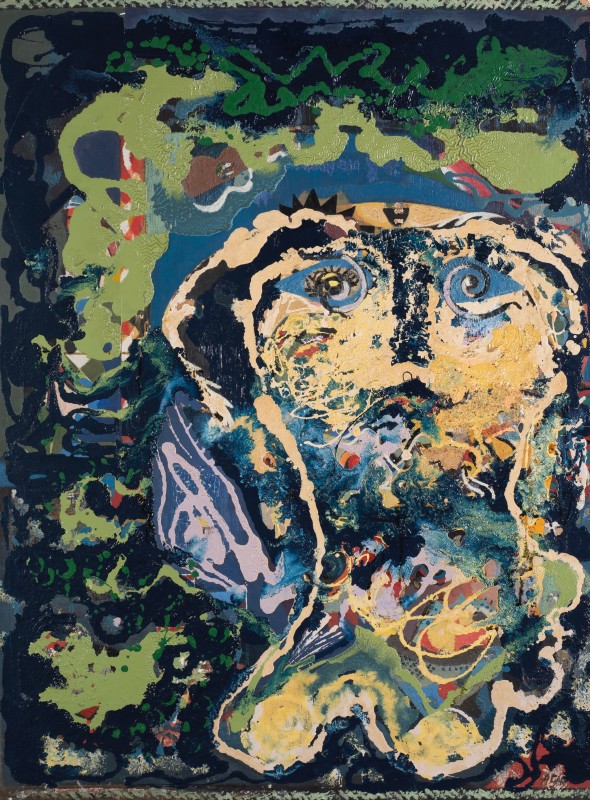 Eileen Agar RAPortrait, 1949 (c.)Oil on board91 x 68 cmSigned lower right; signed, dated and titled verso%3Cdiv%20class%3D%22artist%22%3E%3Cspan%20class%3D%22artist%22%3E%3Cstrong%3EEileen%20Agar%20RA%3C/strong%3E%3C/span%3E%3C/div%3E%0D%3Cdiv%20class%3D%22title%22%3E%3Cem%3EPortrait%3C/em%3E%2C%201949%20%28c.%29%3C/div%3E%0D%3Cdiv%20class%3D%22signed_and_dated%22%3ESigned%20lower%20right%3B%20signed%2C%20dated%20and%20titled%20verso%3C/div%3E%0D%3Cdiv%20class%3D%22medium%22%3EOil%20on%20board%3C/div%3E%0D%3Cdiv%20class%3D%22dimensions%22%3E91%20x%2068%20cm%3C/div%3E
Eileen Agar RAPortrait, 1949 (c.)Oil on board91 x 68 cmSigned lower right; signed, dated and titled verso%3Cdiv%20class%3D%22artist%22%3E%3Cspan%20class%3D%22artist%22%3E%3Cstrong%3EEileen%20Agar%20RA%3C/strong%3E%3C/span%3E%3C/div%3E%0D%3Cdiv%20class%3D%22title%22%3E%3Cem%3EPortrait%3C/em%3E%2C%201949%20%28c.%29%3C/div%3E%0D%3Cdiv%20class%3D%22signed_and_dated%22%3ESigned%20lower%20right%3B%20signed%2C%20dated%20and%20titled%20verso%3C/div%3E%0D%3Cdiv%20class%3D%22medium%22%3EOil%20on%20board%3C/div%3E%0D%3Cdiv%20class%3D%22dimensions%22%3E91%20x%2068%20cm%3C/div%3E -
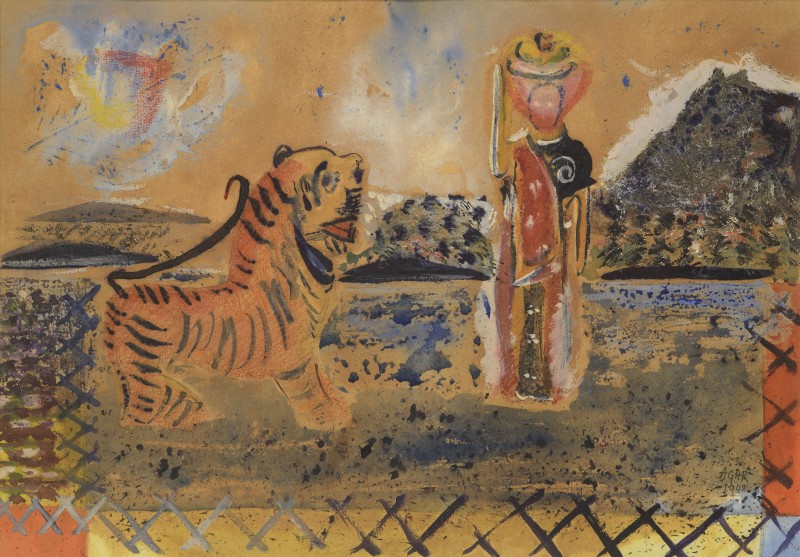 Eileen Agar RAUntitled, 1948Gouache on paper24 x 34 cmSigned and dated lower right%3Cdiv%20class%3D%22artist%22%3E%3Cspan%20class%3D%22artist%22%3E%3Cstrong%3EEileen%20Agar%20RA%3C/strong%3E%3C/span%3E%3C/div%3E%0D%3Cdiv%20class%3D%22title%22%3E%3Cem%3EUntitled%3C/em%3E%2C%201948%3C/div%3E%0D%3Cdiv%20class%3D%22signed_and_dated%22%3ESigned%20and%20dated%20lower%20right%3C/div%3E%0D%3Cdiv%20class%3D%22medium%22%3EGouache%20on%20paper%3C/div%3E%0D%3Cdiv%20class%3D%22dimensions%22%3E24%20x%2034%20cm%3C/div%3E
Eileen Agar RAUntitled, 1948Gouache on paper24 x 34 cmSigned and dated lower right%3Cdiv%20class%3D%22artist%22%3E%3Cspan%20class%3D%22artist%22%3E%3Cstrong%3EEileen%20Agar%20RA%3C/strong%3E%3C/span%3E%3C/div%3E%0D%3Cdiv%20class%3D%22title%22%3E%3Cem%3EUntitled%3C/em%3E%2C%201948%3C/div%3E%0D%3Cdiv%20class%3D%22signed_and_dated%22%3ESigned%20and%20dated%20lower%20right%3C/div%3E%0D%3Cdiv%20class%3D%22medium%22%3EGouache%20on%20paper%3C/div%3E%0D%3Cdiv%20class%3D%22dimensions%22%3E24%20x%2034%20cm%3C/div%3E -
 Eileen Agar RAThe Citadel, 1944Mixed media and collage on paper33.5 x 25 cm%3Cdiv%20class%3D%22artist%22%3E%3Cspan%20class%3D%22artist%22%3E%3Cstrong%3EEileen%20Agar%20RA%3C/strong%3E%3C/span%3E%3C/div%3E%0D%3Cdiv%20class%3D%22title%22%3E%3Cem%3EThe%20Citadel%3C/em%3E%2C%201944%3C/div%3E%0D%3Cdiv%20class%3D%22medium%22%3EMixed%20media%20and%20collage%20on%20paper%3C/div%3E%0D%3Cdiv%20class%3D%22dimensions%22%3E33.5%20x%2025%20cm%3C/div%3E
Eileen Agar RAThe Citadel, 1944Mixed media and collage on paper33.5 x 25 cm%3Cdiv%20class%3D%22artist%22%3E%3Cspan%20class%3D%22artist%22%3E%3Cstrong%3EEileen%20Agar%20RA%3C/strong%3E%3C/span%3E%3C/div%3E%0D%3Cdiv%20class%3D%22title%22%3E%3Cem%3EThe%20Citadel%3C/em%3E%2C%201944%3C/div%3E%0D%3Cdiv%20class%3D%22medium%22%3EMixed%20media%20and%20collage%20on%20paper%3C/div%3E%0D%3Cdiv%20class%3D%22dimensions%22%3E33.5%20x%2025%20cm%3C/div%3E -
 Eileen Agar RAPiece with Strings, 1941Collage and mixed media on paper43.5 x 36.5 cmSigned lower left%3Cdiv%20class%3D%22artist%22%3E%3Cspan%20class%3D%22artist%22%3E%3Cstrong%3EEileen%20Agar%20RA%3C/strong%3E%3C/span%3E%3C/div%3E%0D%3Cdiv%20class%3D%22title%22%3E%3Cem%3EPiece%20with%20Strings%3C/em%3E%2C%201941%3C/div%3E%0D%3Cdiv%20class%3D%22signed_and_dated%22%3ESigned%20lower%20left%3C/div%3E%0D%3Cdiv%20class%3D%22medium%22%3ECollage%20and%20mixed%20media%20on%20paper%20%3C/div%3E%0D%3Cdiv%20class%3D%22dimensions%22%3E43.5%20x%2036.5%20cm%20%3C/div%3E
Eileen Agar RAPiece with Strings, 1941Collage and mixed media on paper43.5 x 36.5 cmSigned lower left%3Cdiv%20class%3D%22artist%22%3E%3Cspan%20class%3D%22artist%22%3E%3Cstrong%3EEileen%20Agar%20RA%3C/strong%3E%3C/span%3E%3C/div%3E%0D%3Cdiv%20class%3D%22title%22%3E%3Cem%3EPiece%20with%20Strings%3C/em%3E%2C%201941%3C/div%3E%0D%3Cdiv%20class%3D%22signed_and_dated%22%3ESigned%20lower%20left%3C/div%3E%0D%3Cdiv%20class%3D%22medium%22%3ECollage%20and%20mixed%20media%20on%20paper%20%3C/div%3E%0D%3Cdiv%20class%3D%22dimensions%22%3E43.5%20x%2036.5%20cm%20%3C/div%3E -
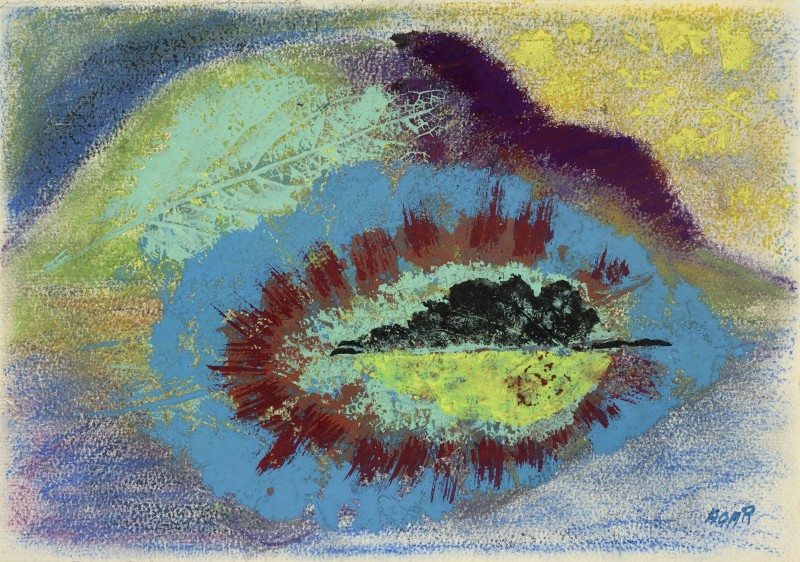 Eileen Agar RAMelbrake, 1940s (c.)Mixed media on paper18 x 25 cmSigned lower right; titled verso%3Cdiv%20class%3D%22artist%22%3E%3Cspan%20class%3D%22artist%22%3E%3Cstrong%3EEileen%20Agar%20RA%3C/strong%3E%3C/span%3E%3C/div%3E%0D%3Cdiv%20class%3D%22title%22%3E%3Cem%3EMelbrake%3C/em%3E%2C%201940s%20%28c.%29%3C/div%3E%0D%3Cdiv%20class%3D%22signed_and_dated%22%3ESigned%20lower%20right%3B%20titled%20verso%3C/div%3E%0D%3Cdiv%20class%3D%22medium%22%3EMixed%20media%20on%20paper%3C/div%3E%0D%3Cdiv%20class%3D%22dimensions%22%3E18%20x%2025%20cm%3C/div%3E
Eileen Agar RAMelbrake, 1940s (c.)Mixed media on paper18 x 25 cmSigned lower right; titled verso%3Cdiv%20class%3D%22artist%22%3E%3Cspan%20class%3D%22artist%22%3E%3Cstrong%3EEileen%20Agar%20RA%3C/strong%3E%3C/span%3E%3C/div%3E%0D%3Cdiv%20class%3D%22title%22%3E%3Cem%3EMelbrake%3C/em%3E%2C%201940s%20%28c.%29%3C/div%3E%0D%3Cdiv%20class%3D%22signed_and_dated%22%3ESigned%20lower%20right%3B%20titled%20verso%3C/div%3E%0D%3Cdiv%20class%3D%22medium%22%3EMixed%20media%20on%20paper%3C/div%3E%0D%3Cdiv%20class%3D%22dimensions%22%3E18%20x%2025%20cm%3C/div%3E -
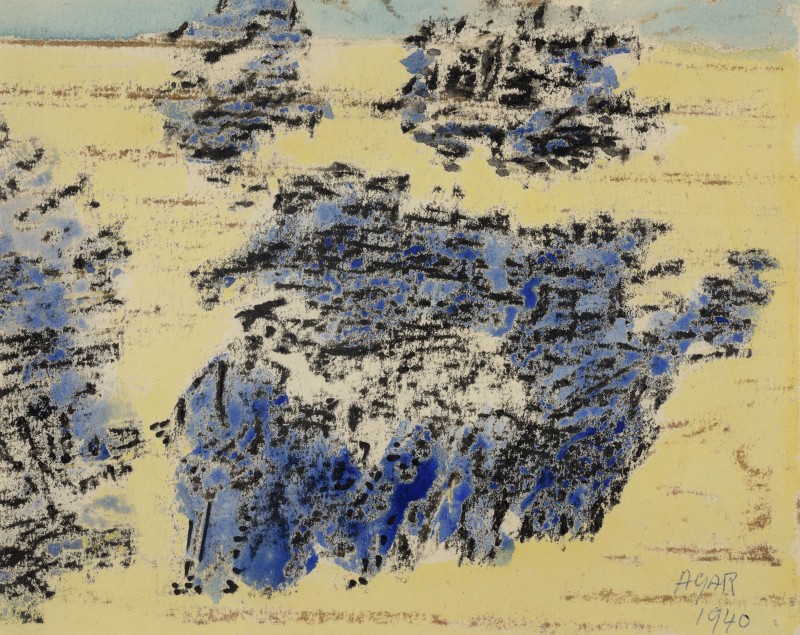 Eileen Agar RAUntitled, 1940Crayon frottage and watercolour on paper13 x 17 cmSigned and dated lower right%3Cdiv%20class%3D%22artist%22%3E%3Cspan%20class%3D%22artist%22%3E%3Cstrong%3EEileen%20Agar%20RA%3C/strong%3E%3C/span%3E%3C/div%3E%0D%3Cdiv%20class%3D%22title%22%3E%3Cem%3EUntitled%3C/em%3E%2C%201940%3C/div%3E%0D%3Cdiv%20class%3D%22signed_and_dated%22%3ESigned%20and%20dated%20lower%20right%3C/div%3E%0D%3Cdiv%20class%3D%22medium%22%3ECrayon%20frottage%20and%20watercolour%20on%20paper%3C/div%3E%0D%3Cdiv%20class%3D%22dimensions%22%3E13%20x%2017%20cm%3C/div%3E
Eileen Agar RAUntitled, 1940Crayon frottage and watercolour on paper13 x 17 cmSigned and dated lower right%3Cdiv%20class%3D%22artist%22%3E%3Cspan%20class%3D%22artist%22%3E%3Cstrong%3EEileen%20Agar%20RA%3C/strong%3E%3C/span%3E%3C/div%3E%0D%3Cdiv%20class%3D%22title%22%3E%3Cem%3EUntitled%3C/em%3E%2C%201940%3C/div%3E%0D%3Cdiv%20class%3D%22signed_and_dated%22%3ESigned%20and%20dated%20lower%20right%3C/div%3E%0D%3Cdiv%20class%3D%22medium%22%3ECrayon%20frottage%20and%20watercolour%20on%20paper%3C/div%3E%0D%3Cdiv%20class%3D%22dimensions%22%3E13%20x%2017%20cm%3C/div%3E -
 Eileen Agar RAThe Family Trio, 1931Lineblock print16 x 16 cmEdition of 100Signed and numbered in pencil%3Cdiv%20class%3D%22artist%22%3E%3Cspan%20class%3D%22artist%22%3E%3Cstrong%3EEileen%20Agar%20RA%3C/strong%3E%3C/span%3E%3C/div%3E%0D%3Cdiv%20class%3D%22title%22%3E%3Cem%3EThe%20Family%20Trio%3C/em%3E%2C%201931%3C/div%3E%0D%3Cdiv%20class%3D%22signed_and_dated%22%3ESigned%20and%20numbered%20in%20pencil%3C/div%3E%0D%3Cdiv%20class%3D%22medium%22%3ELineblock%20print%3C/div%3E%0D%3Cdiv%20class%3D%22dimensions%22%3E16%20x%2016%20cm%3C/div%3E%0D%3Cdiv%20class%3D%22edition_details%22%3EEdition%20of%20100%3C/div%3E
Eileen Agar RAThe Family Trio, 1931Lineblock print16 x 16 cmEdition of 100Signed and numbered in pencil%3Cdiv%20class%3D%22artist%22%3E%3Cspan%20class%3D%22artist%22%3E%3Cstrong%3EEileen%20Agar%20RA%3C/strong%3E%3C/span%3E%3C/div%3E%0D%3Cdiv%20class%3D%22title%22%3E%3Cem%3EThe%20Family%20Trio%3C/em%3E%2C%201931%3C/div%3E%0D%3Cdiv%20class%3D%22signed_and_dated%22%3ESigned%20and%20numbered%20in%20pencil%3C/div%3E%0D%3Cdiv%20class%3D%22medium%22%3ELineblock%20print%3C/div%3E%0D%3Cdiv%20class%3D%22dimensions%22%3E16%20x%2016%20cm%3C/div%3E%0D%3Cdiv%20class%3D%22edition_details%22%3EEdition%20of%20100%3C/div%3E -
 Eileen Agar RAUntitled (studio), 1929Mixed media and collage on paper35 x 25 cmSigned and dated lower right%3Cdiv%20class%3D%22artist%22%3E%3Cspan%20class%3D%22artist%22%3E%3Cstrong%3EEileen%20Agar%20RA%3C/strong%3E%3C/span%3E%3C/div%3E%0D%3Cdiv%20class%3D%22title%22%3E%3Cem%3EUntitled%20%28studio%29%3C/em%3E%2C%201929%3C/div%3E%0D%3Cdiv%20class%3D%22signed_and_dated%22%3ESigned%20and%20dated%20lower%20right%3C/div%3E%0D%3Cdiv%20class%3D%22medium%22%3EMixed%20media%20and%20collage%20on%20paper%3C/div%3E%0D%3Cdiv%20class%3D%22dimensions%22%3E35%20x%2025%20cm%3C/div%3E
Eileen Agar RAUntitled (studio), 1929Mixed media and collage on paper35 x 25 cmSigned and dated lower right%3Cdiv%20class%3D%22artist%22%3E%3Cspan%20class%3D%22artist%22%3E%3Cstrong%3EEileen%20Agar%20RA%3C/strong%3E%3C/span%3E%3C/div%3E%0D%3Cdiv%20class%3D%22title%22%3E%3Cem%3EUntitled%20%28studio%29%3C/em%3E%2C%201929%3C/div%3E%0D%3Cdiv%20class%3D%22signed_and_dated%22%3ESigned%20and%20dated%20lower%20right%3C/div%3E%0D%3Cdiv%20class%3D%22medium%22%3EMixed%20media%20and%20collage%20on%20paper%3C/div%3E%0D%3Cdiv%20class%3D%22dimensions%22%3E35%20x%2025%20cm%3C/div%3E -
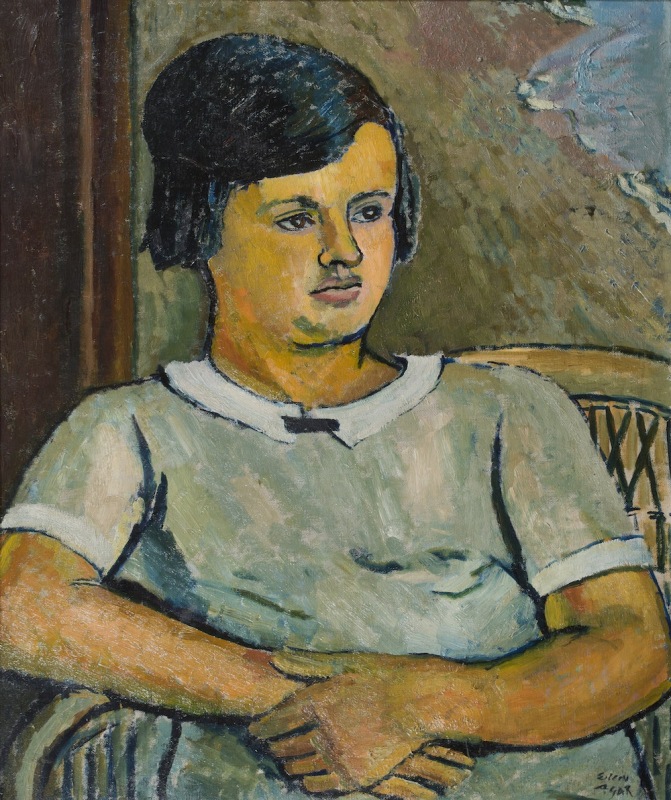 Eileen Agar RAMouma, 1927Oil on canvas77 x 64 cmSigned lower right%3Cdiv%20class%3D%22artist%22%3E%3Cspan%20class%3D%22artist%22%3E%3Cstrong%3EEileen%20Agar%20RA%3C/strong%3E%3C/span%3E%3C/div%3E%0D%3Cdiv%20class%3D%22title%22%3E%3Cem%3EMouma%3C/em%3E%2C%201927%3C/div%3E%0D%3Cdiv%20class%3D%22signed_and_dated%22%3ESigned%20lower%20right%3C/div%3E%0D%3Cdiv%20class%3D%22medium%22%3EOil%20on%20canvas%3C/div%3E%0D%3Cdiv%20class%3D%22dimensions%22%3E77%20x%2064%20cm%3C/div%3E
Eileen Agar RAMouma, 1927Oil on canvas77 x 64 cmSigned lower right%3Cdiv%20class%3D%22artist%22%3E%3Cspan%20class%3D%22artist%22%3E%3Cstrong%3EEileen%20Agar%20RA%3C/strong%3E%3C/span%3E%3C/div%3E%0D%3Cdiv%20class%3D%22title%22%3E%3Cem%3EMouma%3C/em%3E%2C%201927%3C/div%3E%0D%3Cdiv%20class%3D%22signed_and_dated%22%3ESigned%20lower%20right%3C/div%3E%0D%3Cdiv%20class%3D%22medium%22%3EOil%20on%20canvas%3C/div%3E%0D%3Cdiv%20class%3D%22dimensions%22%3E77%20x%2064%20cm%3C/div%3E -
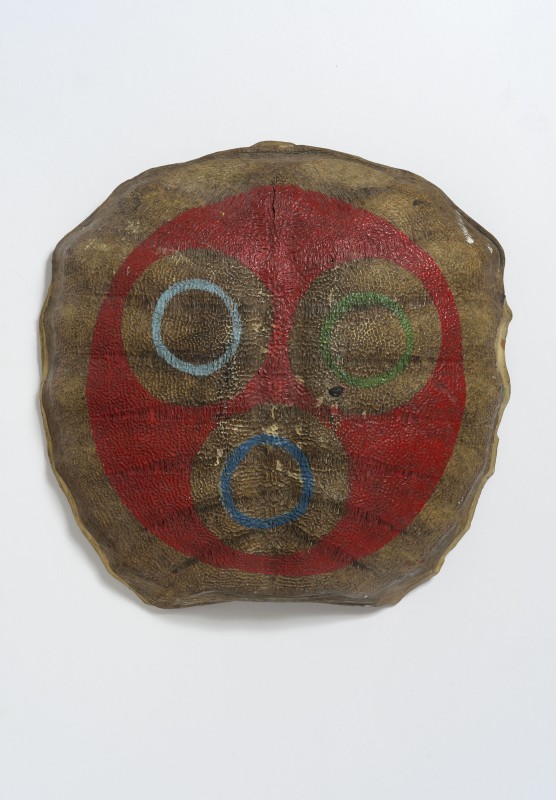 Eileen Agar RAUntitled (turtle shell)Oil on turtle shell40 x 42 cm%3Cdiv%20class%3D%22artist%22%3E%3Cspan%20class%3D%22artist%22%3E%3Cstrong%3EEileen%20Agar%20RA%3C/strong%3E%3C/span%3E%3C/div%3E%0D%3Cdiv%20class%3D%22title%22%3E%3Cem%3EUntitled%20%28turtle%20shell%29%3C/em%3E%3C/div%3E%0D%3Cdiv%20class%3D%22medium%22%3EOil%20on%20turtle%20shell%3C/div%3E%0D%3Cdiv%20class%3D%22dimensions%22%3E40%20x%2042%20cm%3C/div%3E
Eileen Agar RAUntitled (turtle shell)Oil on turtle shell40 x 42 cm%3Cdiv%20class%3D%22artist%22%3E%3Cspan%20class%3D%22artist%22%3E%3Cstrong%3EEileen%20Agar%20RA%3C/strong%3E%3C/span%3E%3C/div%3E%0D%3Cdiv%20class%3D%22title%22%3E%3Cem%3EUntitled%20%28turtle%20shell%29%3C/em%3E%3C/div%3E%0D%3Cdiv%20class%3D%22medium%22%3EOil%20on%20turtle%20shell%3C/div%3E%0D%3Cdiv%20class%3D%22dimensions%22%3E40%20x%2042%20cm%3C/div%3E
